 Search by Keyword
Sign Up Below for our MONTHLY BEATLES TRIVIA QUIZ!
|
“BEING FOR THE BENEFIT OF MR. KITE!”
(John Lennon – Paul McCartney)
So what do you do on your lunch breaks? Other than eating, have you ever used your time productively in such a way that you'd possibly be inspired to create a masterpiece?
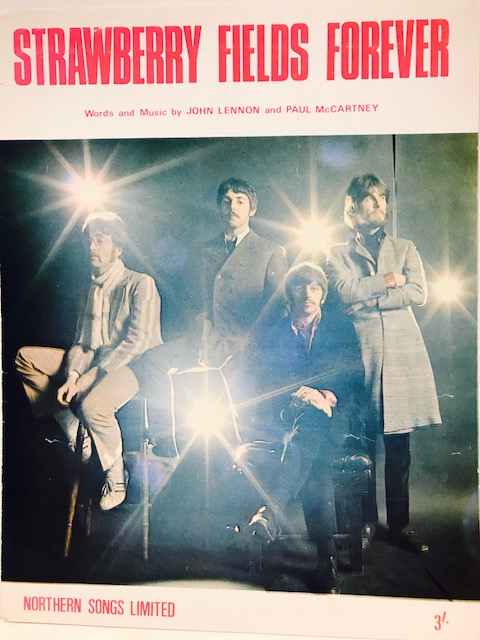 “John got the idea for ‘Mr. Kite’ when we were filming in Sevenoaks in Kent,” recalls George Harrison about The Beatles' second day of filming their promo clip for “Strawberry Fields Forever” on January 31st, 1967. “We had a lunch break, and we went in an antique shop on the way to the restaurant…We were looking at what they had there and John pulled out this thing that we found…a little poster which had more or less the whole lyric of the song ‘Being For The Benefit Of Mr. Kite!’ on it…I think he was just advanced in his awareness of putting everything in a song” “John got the idea for ‘Mr. Kite’ when we were filming in Sevenoaks in Kent,” recalls George Harrison about The Beatles' second day of filming their promo clip for “Strawberry Fields Forever” on January 31st, 1967. “We had a lunch break, and we went in an antique shop on the way to the restaurant…We were looking at what they had there and John pulled out this thing that we found…a little poster which had more or less the whole lyric of the song ‘Being For The Benefit Of Mr. Kite!’ on it…I think he was just advanced in his awareness of putting everything in a song”
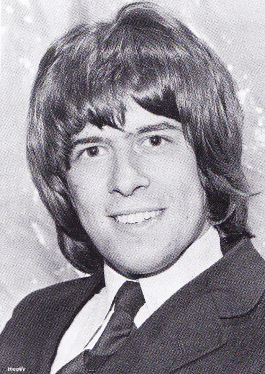 “There was an antique shop close to the hotel we were using in Sevenoaks,” remembers Apple employee Tony Bramwell who was producer of the promo clip. “John and I wandered in and John spotted this framed Victorian circus poster and bought it.” “There was an antique shop close to the hotel we were using in Sevenoaks,” remembers Apple employee Tony Bramwell who was producer of the promo clip. “John and I wandered in and John spotted this framed Victorian circus poster and bought it.”
John himself explains in a 1967 interview: “It was from this old poster for an old-fashioned circus from the 1800’s that I’d bought at an antique shop. We’d been filming a TV piece to go with ‘Strawberry Fields Forever.’ There was a break and I went into this shop and bought an old poster advertising a variety show which starred Mister Kite.”
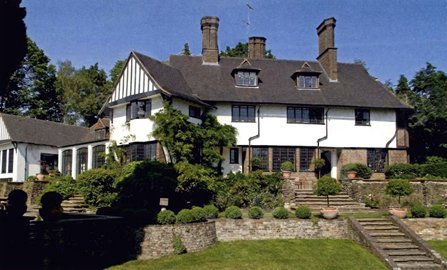 It wasn’t long before this interesting piece of paraphernalia was gracing the wall in the living room of John’s Kenwood home. It may have been purchased only as a curious piece of art on that day, but this artifact from the 1800’s would soon inspire a long-standing favorite track on the group’s groundbreaking 1967 album “Sgt. Pepper’s Lonely Hearts Club Band.” What better use of a lunch break could there possibly be? It wasn’t long before this interesting piece of paraphernalia was gracing the wall in the living room of John’s Kenwood home. It may have been purchased only as a curious piece of art on that day, but this artifact from the 1800’s would soon inspire a long-standing favorite track on the group’s groundbreaking 1967 album “Sgt. Pepper’s Lonely Hearts Club Band.” What better use of a lunch break could there possibly be?
Songwriting History
"Pablo FANQUE’S CIRCUS ROYAL, TOWN MEADOWS, ROCHDALE. Grandest Night Of The Season! AND POSITIVELY THE LAST NIGHT BUT THREE! BEING FOR THE BENEFIT OF MR. KITE, (LATE OF WELLS’S CIRCUS) AND MR. J. HENDERSON, THE CELEBRATED SOMERSET THROWER! WIRE DANCER, VAULTER, RIDER, etc. On TUESDAY Evening, February 14th, 1843. Mssrs. KITE and HENDERSON, in announcing the following Entertainments ensure the Public that this Night's Production will be one of the most splendid ever produced in this Town, having been some days in preparation. Mr. Kite will, for this night only, introduce the CELEBRATED HORSE ZANTHUS! Well known to be one of the best Broke Horses IN THE WORLD!!! Mr. HENDERSON will undertake the arduous Task of THROWING TWENTY-ONE SOMERSETS, ON THE SOLID GROUND. Mr. KITE will appear, for the first time this season, On The Tight Rope, When Two Gentlemen Amatuers of this Town will perform with him. Mr. HENDERSON will, for the first time in Rochdale, introduce his extraordinary TRAMPOLINE LEAPS AND SOMERSETS! Over Men & Horses, through Hoops, over Garters and lastly through a Hogshead of REAL FIRE! In this branch of the profession Mr. H challenges THE WORLD! For particulars see Bills of the day.”
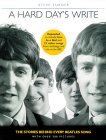 While the exact verbiage from the poster, as spelled out above, is hardly an exact match to the lyrics of the song “Being For The Benefit Of Mr. Kite,” we can see how John would be attracted to the spellbinding huckster-like approach used therein, complete with its use of words seemingly lost to English-speaking ears 124 years later. "The 'somersets' which Mr. Henderson performed on 'solid ground' were somersaults," writes Steve Turner in his 1994 book “A Hard Day’s Write,” “‘garters’ were banners held between two people and a ‘trampoline’ in those days was a wooden springboard rather than stretched canvas.” The curious term “hogshead” in this case referred to a large barrel or cask; to see someone perform somersaults or cartwheels through one of these 'hogsheads' placed on its side containing “real fire” would certainly be worth the admission price alone! While the exact verbiage from the poster, as spelled out above, is hardly an exact match to the lyrics of the song “Being For The Benefit Of Mr. Kite,” we can see how John would be attracted to the spellbinding huckster-like approach used therein, complete with its use of words seemingly lost to English-speaking ears 124 years later. "The 'somersets' which Mr. Henderson performed on 'solid ground' were somersaults," writes Steve Turner in his 1994 book “A Hard Day’s Write,” “‘garters’ were banners held between two people and a ‘trampoline’ in those days was a wooden springboard rather than stretched canvas.” The curious term “hogshead” in this case referred to a large barrel or cask; to see someone perform somersaults or cartwheels through one of these 'hogsheads' placed on its side containing “real fire” would certainly be worth the admission price alone!
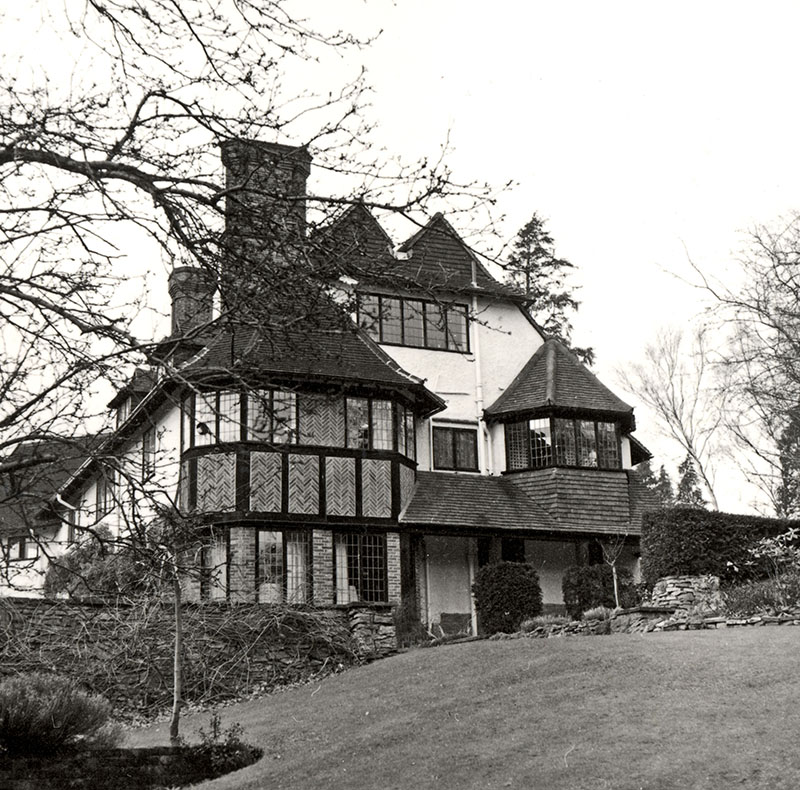 “’Mr. Kite’ was a poster that John had in his house in Weybridge,” Paul explains in his 1997 book “Many Years From Now.” “I arrived there for a session one day and he had it up on the wall in his living room. It was all there, the trampoline, the somersets, the hoops, the garters, the horse. It was Pablo Fanque’s fair, and it said ‘Being for the benefit of Mr. Kite’; almost the whole song was written right off of this poster.” “Everything in the song is from that poster,” John explained, “except the horse wasn’t called Henry. Now, there were all kinds of stories about 'Henry the horse' being heroin. I had never seen heroin in that period. It’s all just from that poster.” “’Mr. Kite’ was a poster that John had in his house in Weybridge,” Paul explains in his 1997 book “Many Years From Now.” “I arrived there for a session one day and he had it up on the wall in his living room. It was all there, the trampoline, the somersets, the hoops, the garters, the horse. It was Pablo Fanque’s fair, and it said ‘Being for the benefit of Mr. Kite’; almost the whole song was written right off of this poster.” “Everything in the song is from that poster,” John explained, “except the horse wasn’t called Henry. Now, there were all kinds of stories about 'Henry the horse' being heroin. I had never seen heroin in that period. It’s all just from that poster.”
 Other than the horse being named Zanthus instead of 'Henry' (who did not "waltz" as far as anyone knew), multiple other changes to the facts on the poster were made in order to make them work well in the composition. In his 1994 book “A Hard Day’s Write,” Steve Turner explains: “It was Mr. Henderson who had offered to 'challenge the world' and not Mr. Kite: the Hendersons weren’t ‘late of Pablo Fanque’s Fair’ anyway, it was Kite who was ‘late of Wells’s Circus.’ In order to rhyme with ‘don’t be late,’ John had events moved from Rochdale to ‘Bishopsgate’ and to rhyme with ‘will all be there’ he changed the circus to a ‘fair.’” Other than the horse being named Zanthus instead of 'Henry' (who did not "waltz" as far as anyone knew), multiple other changes to the facts on the poster were made in order to make them work well in the composition. In his 1994 book “A Hard Day’s Write,” Steve Turner explains: “It was Mr. Henderson who had offered to 'challenge the world' and not Mr. Kite: the Hendersons weren’t ‘late of Pablo Fanque’s Fair’ anyway, it was Kite who was ‘late of Wells’s Circus.’ In order to rhyme with ‘don’t be late,’ John had events moved from Rochdale to ‘Bishopsgate’ and to rhyme with ‘will all be there’ he changed the circus to a ‘fair.’”
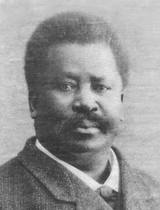 The characters referred to on the poster were, of course, real people with real histories. Pablo Fanque was a very talented performer-turned British circus owner whose real name was thought to be William Darby. John Henderson, with his wife Agnes, travelled throughout Europe and Russia during that time as circus performers, John Henderson being employed as a wire-walker, trampolinist and clown. William Kite was an all-around circus performer who earlier was employed in his father’s “Kite’s Pavilion Circus” before performing in “Wells’s Circus” and “Pablo Fanque’s Circus Royal” as indicated in the poster, which pictures him balancing on top of a pole, head down, while playing a trumpet. The characters referred to on the poster were, of course, real people with real histories. Pablo Fanque was a very talented performer-turned British circus owner whose real name was thought to be William Darby. John Henderson, with his wife Agnes, travelled throughout Europe and Russia during that time as circus performers, John Henderson being employed as a wire-walker, trampolinist and clown. William Kite was an all-around circus performer who earlier was employed in his father’s “Kite’s Pavilion Circus” before performing in “Wells’s Circus” and “Pablo Fanque’s Circus Royal” as indicated in the poster, which pictures him balancing on top of a pole, head down, while playing a trumpet.
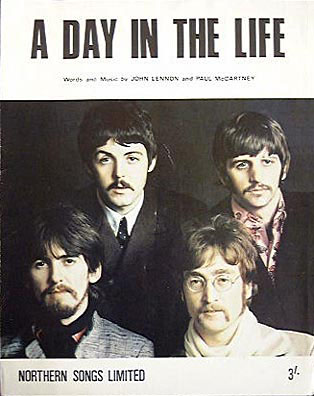 “I wrote that as a pure poetic job,” John Lennon explains rather flippantly. “I had to write it because it was time to write and I had to compose it quickly because otherwise I wouldn’t have been on the album. So, I had to knock off a few songs, so I knocked off ‘A Day In The Life’ and ‘Mr. Kite.’” During a 1968 interview for the Hunter Davies’ biography “The Beatles,” Lennon’s opinion of the song didn't change much: “I hardly made up a word, just connecting the lists together. Word for word, really. I wasn’t very proud of that. There was no real work. I was just going through the motions because we needed a new song for ‘Sgt. Pepper’ at that moment.” Negative opinions aside, the overall impression from these quotes is that John wrote the song completely by himself. “I wrote that as a pure poetic job,” John Lennon explains rather flippantly. “I had to write it because it was time to write and I had to compose it quickly because otherwise I wouldn’t have been on the album. So, I had to knock off a few songs, so I knocked off ‘A Day In The Life’ and ‘Mr. Kite.’” During a 1968 interview for the Hunter Davies’ biography “The Beatles,” Lennon’s opinion of the song didn't change much: “I hardly made up a word, just connecting the lists together. Word for word, really. I wasn’t very proud of that. There was no real work. I was just going through the motions because we needed a new song for ‘Sgt. Pepper’ at that moment.” Negative opinions aside, the overall impression from these quotes is that John wrote the song completely by himself.
 Not so, according to Paul in his 1997 book “Many Years From Now.” “We just sat down and wrote it. We pretty much took it down word for word and then just made up some little bits and pieces to glue it together. It was more John’s because it was his poster so he ended up singing it, but it was quite a co-written song. We were both sitting there to write it at his house, just looking at it on the wall in the living room. But that was nice, it wrote itself very easily.” Not so, according to Paul in his 1997 book “Many Years From Now.” “We just sat down and wrote it. We pretty much took it down word for word and then just made up some little bits and pieces to glue it together. It was more John’s because it was his poster so he ended up singing it, but it was quite a co-written song. We were both sitting there to write it at his house, just looking at it on the wall in the living room. But that was nice, it wrote itself very easily.”
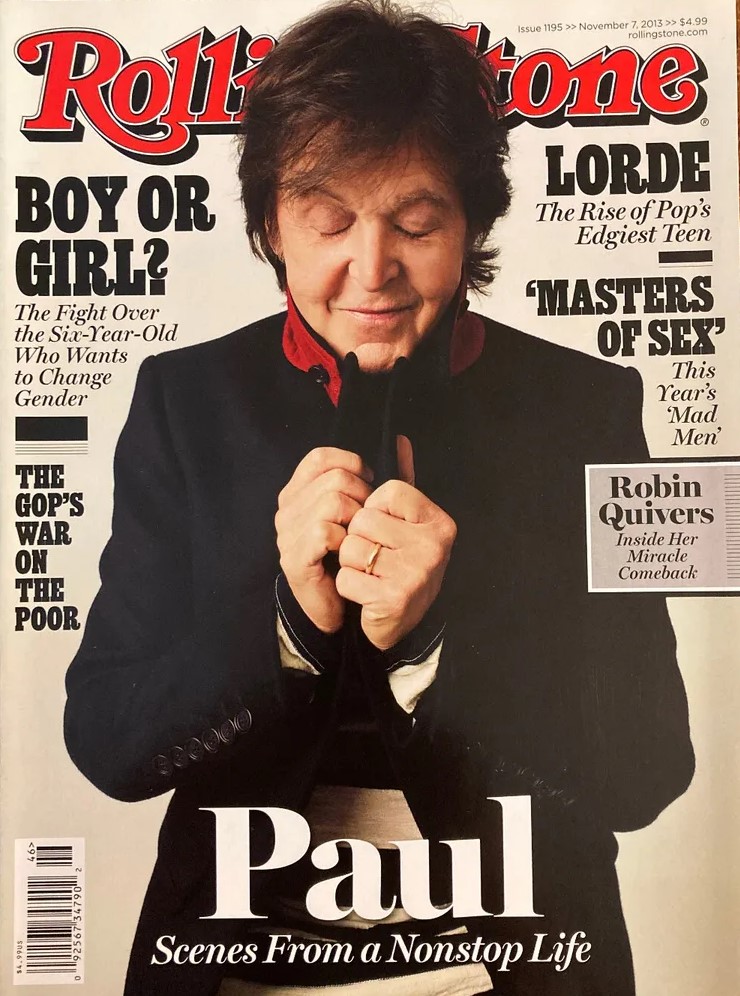 In his 2013 interview with Rolling Stone magazine, Paul elaborated on the writing of “Mr. Kite,” as well as setting the record straight. "I have great memories of writing it with John. I read, occasionally, people say, ‘Oh, John wrote that one.’ I'd say, ‘Wait a minute, what was that afternoon I'd spent with him, then, looking at this poster?’ He happened to have a poster in his living room at home. I was out at his house, and we just got this idea, because the poster said ‘Being for the Benefit of Mr. Kite’ – and then we put in, you know, ‘there will be a show tonight,’ and then it was, ‘of course,’ then it had ‘Henry the Horse dances the waltz.’ You know, whatever. ‘The Hendersons, Pablo Fanques, somersets…’ We said, ‘What was 'somersets'? It must have just been an old-fashioned way of saying somersaults.’ The song just wrote itself. So, yeah, I was happy to kind of reclaim it as partially mine." In his 2013 interview with Rolling Stone magazine, Paul elaborated on the writing of “Mr. Kite,” as well as setting the record straight. "I have great memories of writing it with John. I read, occasionally, people say, ‘Oh, John wrote that one.’ I'd say, ‘Wait a minute, what was that afternoon I'd spent with him, then, looking at this poster?’ He happened to have a poster in his living room at home. I was out at his house, and we just got this idea, because the poster said ‘Being for the Benefit of Mr. Kite’ – and then we put in, you know, ‘there will be a show tonight,’ and then it was, ‘of course,’ then it had ‘Henry the Horse dances the waltz.’ You know, whatever. ‘The Hendersons, Pablo Fanques, somersets…’ We said, ‘What was 'somersets'? It must have just been an old-fashioned way of saying somersaults.’ The song just wrote itself. So, yeah, I was happy to kind of reclaim it as partially mine."
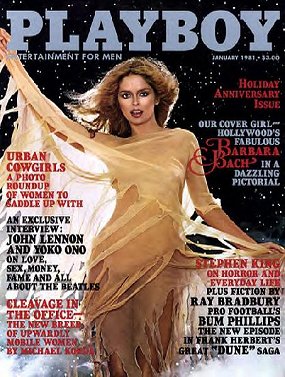 But was John Lennon infusing any deeper or hidden meanings into the lyrics of the song? "People want to know what the inner meaning of 'Mr. Kite' was," he explained in "The Beatles" biography. "There wasn't any. I just did it. I shoved a lot of words together then shoved some noise on. I just did it. I didn't dig that song when I wrote it. I didn't believe in it when I was doing it. But nobody will believe it. They don't want to. They want it to be important." But was John Lennon infusing any deeper or hidden meanings into the lyrics of the song? "People want to know what the inner meaning of 'Mr. Kite' was," he explained in "The Beatles" biography. "There wasn't any. I just did it. I shoved a lot of words together then shoved some noise on. I just did it. I didn't dig that song when I wrote it. I didn't believe in it when I was doing it. But nobody will believe it. They don't want to. They want it to be important."
Happily, though, John’s opinion of the song improved in time. “It’s so cosmically beautiful,” he told David Sheff in his Playboy interview in 1980. “The song is pure, like a painting, a pure watercolor.”
Recording History
 This “pure watercolor” first began to take shape back on February 17th, 1967 in EMI Studio Two, session documentation indicating the session beginning at 7 pm. After some extensive rehearsal and experimentation with the arrangement, the first of seven takes of the rhythm track recorded on this day show that the circus-like feel of the song was already in place. This “pure watercolor” first began to take shape back on February 17th, 1967 in EMI Studio Two, session documentation indicating the session beginning at 7 pm. After some extensive rehearsal and experimentation with the arrangement, the first of seven takes of the rhythm track recorded on this day show that the circus-like feel of the song was already in place.
 “In terms of asking for particular interpretations, John Lennon was the least articulate,” George Martin remembers. “John would deal in moods, he would deal in colors almost, and would never be specific about what instruments or what line I had. I would do that myself. He was more likely to say (in the case of ‘Being For The Benefit Of Mr. Kite!):‘It’s a fairground sequence. I want to be in that circus atmosphere…’ So it was up to me to provide that.” “In terms of asking for particular interpretations, John Lennon was the least articulate,” George Martin remembers. “John would deal in moods, he would deal in colors almost, and would never be specific about what instruments or what line I had. I would do that myself. He was more likely to say (in the case of ‘Being For The Benefit Of Mr. Kite!):‘It’s a fairground sequence. I want to be in that circus atmosphere…’ So it was up to me to provide that.”
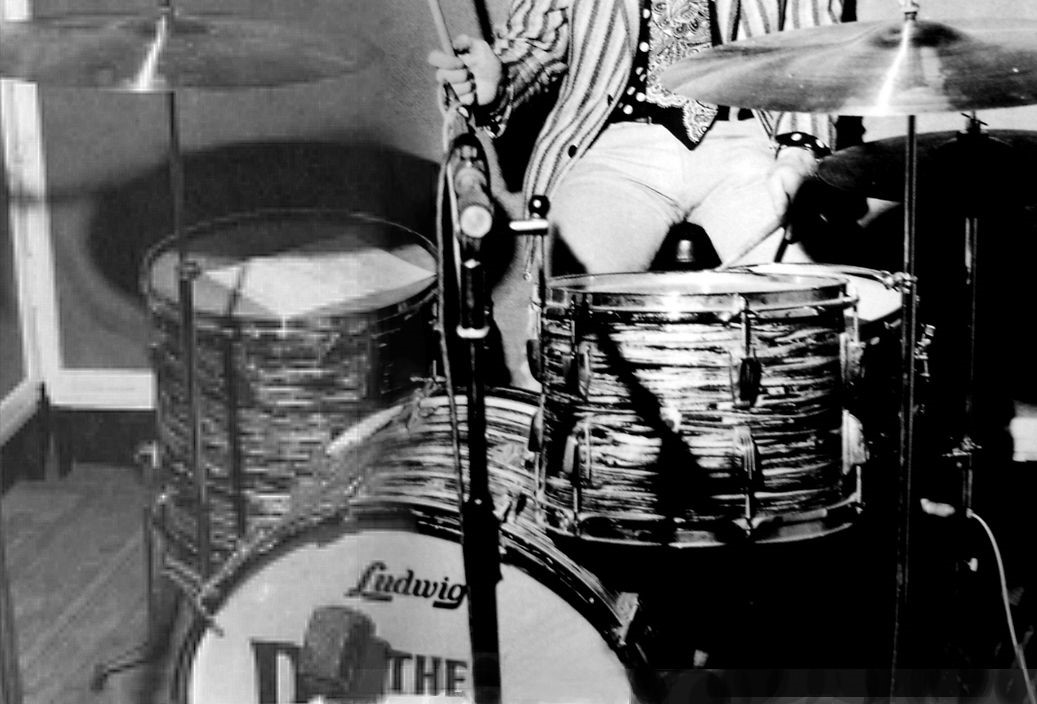 John's “circus atmosphere” was evident in the rhythm track, especially shown by the manner in which Ringo played his drums, providing the drum roll to introduce each verse as well as splashing open hi-hats on the two-and-four beats of every measure. The other instrumentation on these rhythm track takes included Paul on bass, George Harrison on maracas and George Martin on harmonium while Lennon worked at perfecting his lead vocals. (Note: Paul related to Rolling Stone magazine in 2013 his recollections of adding the bass part as an overdub after the rhythm track was recorded, but listening to the original takes of the song, as witnessed on “Anthology 2,” reveals otherwise.) John's “circus atmosphere” was evident in the rhythm track, especially shown by the manner in which Ringo played his drums, providing the drum roll to introduce each verse as well as splashing open hi-hats on the two-and-four beats of every measure. The other instrumentation on these rhythm track takes included Paul on bass, George Harrison on maracas and George Martin on harmonium while Lennon worked at perfecting his lead vocals. (Note: Paul related to Rolling Stone magazine in 2013 his recollections of adding the bass part as an overdub after the rhythm track was recorded, but listening to the original takes of the song, as witnessed on “Anthology 2,” reveals otherwise.)
 "Take one" began with Lennon becoming slightly irritated at engineer Geoff Emerick as can be heard on the 1996 released “Anthology 2” and explained in his 2007 book “Here, There And Everywhere”: “John Lennon always had a precise title for each of his songs, and woe betold any of us who didn’t get it correct. I learned that the hard way one night when I slated a take in a hurry and mistakenly shortened the title to ‘For The Benefit Of Mr. Kite.’ Lennon immediately corrected me in an irritated tone of voice: ‘No, that’s “Being For The Benefit Of Mr. Kite.”’” "Take one" began with Lennon becoming slightly irritated at engineer Geoff Emerick as can be heard on the 1996 released “Anthology 2” and explained in his 2007 book “Here, There And Everywhere”: “John Lennon always had a precise title for each of his songs, and woe betold any of us who didn’t get it correct. I learned that the hard way one night when I slated a take in a hurry and mistakenly shortened the title to ‘For The Benefit Of Mr. Kite.’ Lennon immediately corrected me in an irritated tone of voice: ‘No, that’s “Being For The Benefit Of Mr. Kite.”’”
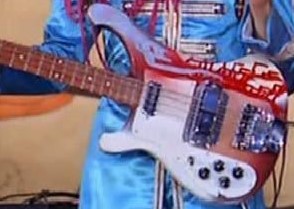 "Take one" broke down right after the first measure because Paul slowly counted down the song as a straight 4/4 beat instead of a swing beat. When it was quickly apparent that this was not what they intended, Paul thereby demonstrated the correct feel on his bass to clue Ringo in on what was required for the song. "Take two" now contained the correct tempo and feel, but broke down in the third measure of the first verse when John finished his first lyric line. He slurred the words “Mr. Kite, theeere will be a show tonight” instead of leaving a small gap between the phrases, which spurred Paul to instruct John on how he should sing it. “Let’s try and sort of see it as a big, get it in…and all the little breaks that are left for you to sing to,” McCartney insisted while then quickly demonstrating to John how he envisioned the lyrics to be sung. "Take one" broke down right after the first measure because Paul slowly counted down the song as a straight 4/4 beat instead of a swing beat. When it was quickly apparent that this was not what they intended, Paul thereby demonstrated the correct feel on his bass to clue Ringo in on what was required for the song. "Take two" now contained the correct tempo and feel, but broke down in the third measure of the first verse when John finished his first lyric line. He slurred the words “Mr. Kite, theeere will be a show tonight” instead of leaving a small gap between the phrases, which spurred Paul to instruct John on how he should sing it. “Let’s try and sort of see it as a big, get it in…and all the little breaks that are left for you to sing to,” McCartney insisted while then quickly demonstrating to John how he envisioned the lyrics to be sung.
 "Take three" apparently made it through to the end, Lennon reduced to ‘dum-dumming’ the lyrics by this point as a guide vocal with the intention of overdubbing the proper lead vocals later. By "take four," they had their act together pretty well, as can be heard as a bonus track on various editions of the 50th Anniversary release of the "Sgt. Pepper" album. The tape was rolling while John humorously ran through the first line of the song and requested "iced water" while the others were goofing around on their instruments, which prompted George Martin from behind the harmonium to exclaim, “OK, men, let’s go. The light’s on.” After a countdown from Paul, this complete take went quite well. "Take three" apparently made it through to the end, Lennon reduced to ‘dum-dumming’ the lyrics by this point as a guide vocal with the intention of overdubbing the proper lead vocals later. By "take four," they had their act together pretty well, as can be heard as a bonus track on various editions of the 50th Anniversary release of the "Sgt. Pepper" album. The tape was rolling while John humorously ran through the first line of the song and requested "iced water" while the others were goofing around on their instruments, which prompted George Martin from behind the harmonium to exclaim, “OK, men, let’s go. The light’s on.” After a countdown from Paul, this complete take went quite well.
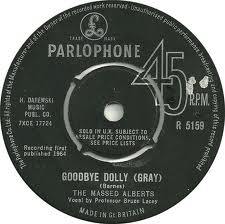 After it concluded, George Martin gave John a suggestion concerning his not needing to sing the song so forcefully. "Don't shout it out, there, John, just..." he suggested, "Well, alright" being John's answer. George Martin continued, "You'll hear it, I mean, it will be on the bass..," which prompted Lennon to reply, "Well, we'll have the 'Massed Alberts' on by then, won't we?" "The Massed Alberts" were a British music/comedy troupe of the '50s and '60s that were produced by George Martin at some point. The producer's patronizing response, according to Geoff Emerick, was "'Oh, honestly!'...That was his stock expression of disapproval whenever he thought somebody was talking nonsense." Whether Lennon was serious here or just being facetious is unknown. What is known is that the "Massed Alberts" never made it onto "Mr. Kite!" After it concluded, George Martin gave John a suggestion concerning his not needing to sing the song so forcefully. "Don't shout it out, there, John, just..." he suggested, "Well, alright" being John's answer. George Martin continued, "You'll hear it, I mean, it will be on the bass..," which prompted Lennon to reply, "Well, we'll have the 'Massed Alberts' on by then, won't we?" "The Massed Alberts" were a British music/comedy troupe of the '50s and '60s that were produced by George Martin at some point. The producer's patronizing response, according to Geoff Emerick, was "'Oh, honestly!'...That was his stock expression of disapproval whenever he thought somebody was talking nonsense." Whether Lennon was serious here or just being facetious is unknown. What is known is that the "Massed Alberts" never made it onto "Mr. Kite!"
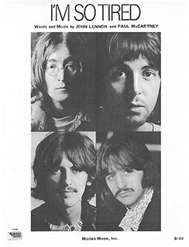 "Take seven," as can be heard on the "Super Deluxe Edition" box set of the "Sgt. Pepper" album, went quite well as far as most of the rhythm track was concerned, Lennon putting in a very good performance on lead vocals as well. Before the song started, Lennon is heard saying, "This time you'll get it in the middle of the song...I had to laugh myself, y'know," and then, as Paul was thumping away on bass, Lennon sang, "Wild, wild, Smack-on." Directly after the last verse, however, mistakes are made and the song abruptly ends, spurring John to exclaim in an indecipherable broken accent (not unlike his utterances at the end of "I'm So Tired"), "How itz goingz? A short we'll have to excuse us." "Take seven," as can be heard on the "Super Deluxe Edition" box set of the "Sgt. Pepper" album, went quite well as far as most of the rhythm track was concerned, Lennon putting in a very good performance on lead vocals as well. Before the song started, Lennon is heard saying, "This time you'll get it in the middle of the song...I had to laugh myself, y'know," and then, as Paul was thumping away on bass, Lennon sang, "Wild, wild, Smack-on." Directly after the last verse, however, mistakes are made and the song abruptly ends, spurring John to exclaim in an indecipherable broken accent (not unlike his utterances at the end of "I'm So Tired"), "How itz goingz? A short we'll have to excuse us."
 "Take Seven" of the rhythm track was deemed acceptable for the majority of the song, but an edit apparently had to be made to capture the final measures of the song from a previous take, possibly the excellent "take four." Since all four tracks of the four-track tape were now full at this point, two attempts at a reduction mix were made, transforming "take seven" into "take nine." Onto this, John overdubbed his lead vocals as also heard on the finished product, this being recorded at 49 cycles per second instead of the normal 50 so John's voice would sound slightly higher when played back. It was undoubtedly at this point that he also double-tracked his vocals in key spots as well as recruiting Paul and George to contribute harmony vocals in strategic places. A rough mono mix was then made of the song as it was thus far, studio documentation showing that Paul, not John, took it home with him. "Take Seven" of the rhythm track was deemed acceptable for the majority of the song, but an edit apparently had to be made to capture the final measures of the song from a previous take, possibly the excellent "take four." Since all four tracks of the four-track tape were now full at this point, two attempts at a reduction mix were made, transforming "take seven" into "take nine." Onto this, John overdubbed his lead vocals as also heard on the finished product, this being recorded at 49 cycles per second instead of the normal 50 so John's voice would sound slightly higher when played back. It was undoubtedly at this point that he also double-tracked his vocals in key spots as well as recruiting Paul and George to contribute harmony vocals in strategic places. A rough mono mix was then made of the song as it was thus far, studio documentation showing that Paul, not John, took it home with him.
 Regarding the rhythm track that was recorded at this session, Geoff Emerick has a vivid recollection: “It did take quite a few tries to nail it down, though, which caused problems for George (Martin), because the harmonium required pedaling to get air through its bellows, kind of like riding a bicycle. After playing this non-stop for many hours, he finally collapsed in exhaustion, sprawled out on the floor resembling a snow angel...this sight giving us all great amusement.” Regarding the rhythm track that was recorded at this session, Geoff Emerick has a vivid recollection: “It did take quite a few tries to nail it down, though, which caused problems for George (Martin), because the harmonium required pedaling to get air through its bellows, kind of like riding a bicycle. After playing this non-stop for many hours, he finally collapsed in exhaustion, sprawled out on the floor resembling a snow angel...this sight giving us all great amusement.”
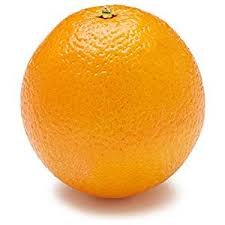 Concerning John's ideas for overdubs on this song, George Martin explained: “He’d make whooshing noises and try to describe what only he could hear in his head, saying that he wanted a song ‘to sound like an orange.’ John had said that he wanted to ‘smell the sawdust on the floor,’ he wanted to taste the atmosphere of the circus.” Concerning John's ideas for overdubs on this song, George Martin explained: “He’d make whooshing noises and try to describe what only he could hear in his head, saying that he wanted a song ‘to sound like an orange.’ John had said that he wanted to ‘smell the sawdust on the floor,’ he wanted to taste the atmosphere of the circus.”
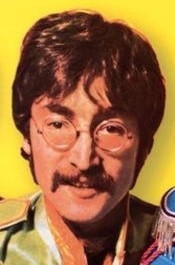 Geoff Emerick related this conversation in more detail: “John, as usual, was full of creative ideas but had trouble expressing them in practical terms. ‘What I want…is some kind of swirly music, y'know?’ George Martin didn’t know. Lennon persisted. ‘I want the sound of a fairground around my voice; I want to be able to smell the sawdust and the animals. I want to feel like I’m at the circus with Mr. Kite and the Hendersons and all that.’...Lennon's request didn’t seem all that outlandish, but he wasn’t exactly giving us specific directions in how to achieve his vision, either.” Geoff Emerick related this conversation in more detail: “John, as usual, was full of creative ideas but had trouble expressing them in practical terms. ‘What I want…is some kind of swirly music, y'know?’ George Martin didn’t know. Lennon persisted. ‘I want the sound of a fairground around my voice; I want to be able to smell the sawdust and the animals. I want to feel like I’m at the circus with Mr. Kite and the Hendersons and all that.’...Lennon's request didn’t seem all that outlandish, but he wasn’t exactly giving us specific directions in how to achieve his vision, either.”
 According to Geoff Emerick, the conversation between John and George Martin apparently continued in the control room before the session ended early the following morning. George Martin told Lennon, “’What we need is a calliope.’ ‘A what?’ ‘Steam whistles, played by a keyboard, y'know, one of those tooty things.’ I was starting to get an idea. ‘How about if we try what we did on ‘Yellow Submarine?’ I stated. ‘You know, cutting up some tapes of sound effects to try to create some atmosphere?’ By this point, Lennon had lost interest and was heading out of the control room in search of some new stimulation. ‘OK, fine, whatever you think.’ George Martin turned to me. ‘I think you may be on to something there, Geoff.’” This apparently concluded the session at 3 am with George Martin considering various alternatives to make John’s vision a reality. According to Geoff Emerick, the conversation between John and George Martin apparently continued in the control room before the session ended early the following morning. George Martin told Lennon, “’What we need is a calliope.’ ‘A what?’ ‘Steam whistles, played by a keyboard, y'know, one of those tooty things.’ I was starting to get an idea. ‘How about if we try what we did on ‘Yellow Submarine?’ I stated. ‘You know, cutting up some tapes of sound effects to try to create some atmosphere?’ By this point, Lennon had lost interest and was heading out of the control room in search of some new stimulation. ‘OK, fine, whatever you think.’ George Martin turned to me. ‘I think you may be on to something there, Geoff.’” This apparently concluded the session at 3 am with George Martin considering various alternatives to make John’s vision a reality.
 Having the full weekend off, the next session being scheduled for Monday, February 20th, George Martin had time to look at various options. “I thought that it might be possible to get ahold of a steam organ and actually use that,” George Martin recalled. “But, that was a bit of a wild idea and too cumbersome and it would have taken much too long for it to be done.” Geoff Emerick remembers: “Despite their enormous size, a few phone calls were actually placed to see if one was available for hire – to no avail.” Mark Lewisohn’s book “The Beatles Recording Sessions” relates: “Only automatic models were available, played by punched cards. There were no hand operated models available. The fairground sound would have to be created inside Abbey Road using other equipment.” Having the full weekend off, the next session being scheduled for Monday, February 20th, George Martin had time to look at various options. “I thought that it might be possible to get ahold of a steam organ and actually use that,” George Martin recalled. “But, that was a bit of a wild idea and too cumbersome and it would have taken much too long for it to be done.” Geoff Emerick remembers: “Despite their enormous size, a few phone calls were actually placed to see if one was available for hire – to no avail.” Mark Lewisohn’s book “The Beatles Recording Sessions” relates: “Only automatic models were available, played by punched cards. There were no hand operated models available. The fairground sound would have to be created inside Abbey Road using other equipment.”
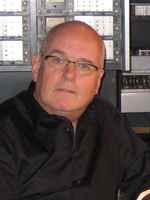 The recording staff of George Martin, Geoff Emerick and 2nd engineer Richard Lush came together in EMI Studio Three on February 20th, 1967, at the usual starting time of 7 pm to work out this dilemma. “We were in Studio Three that night because our usual haunt – Studio Two – was in use by another artist,” recalled Geoff Emerick. “George Martin must have block-booked them in for just a month or two because it had never taken any longer to record a Beatles album. He wouldn’t have had any way of knowing beforehand that much greater amounts of time would be spent on ‘Pepper.’ As a result, the group’s gear wasn’t in the studio with them; it was still being stored in Studio Two, where we would be returning for most of the rest of the album.” The recording staff of George Martin, Geoff Emerick and 2nd engineer Richard Lush came together in EMI Studio Three on February 20th, 1967, at the usual starting time of 7 pm to work out this dilemma. “We were in Studio Three that night because our usual haunt – Studio Two – was in use by another artist,” recalled Geoff Emerick. “George Martin must have block-booked them in for just a month or two because it had never taken any longer to record a Beatles album. He wouldn’t have had any way of knowing beforehand that much greater amounts of time would be spent on ‘Pepper.’ As a result, the group’s gear wasn’t in the studio with them; it was still being stored in Studio Two, where we would be returning for most of the rest of the album.”
Meanwhile, in the control room, George Martin planned his strategy: “I knew we needed a backwash, a general mush of sound, like if you go to a fairground, shut your eyes and listen: rifle shots, hurdy-gurdy noises, people shouting and – way in the distance – just a tremendous chaotic sound.”
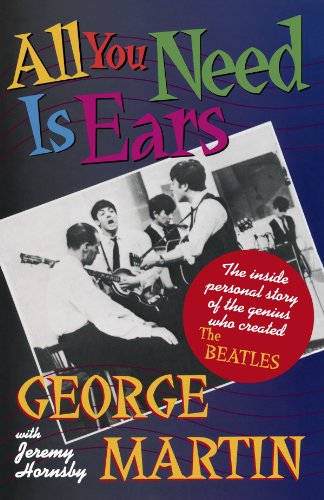 George Martin then seriously considered Geoff Emerick’s previous suggestion of using cut-up sound effect tapes to get the job done. In his book “All You Need Is Ears,” George Martin gives the details (however, suggesting it was his initial idea and forgetting they had done it before the prior year for “Yellow Submarine”). “I got together a lot of recordings of old Victorian steam organs – the type you hear playing on carousels at county fairs – playing all the traditional tunes, Sousa marches, etc. But I clearly couldn’t use even a snatch of any of them that would be identifiable; so I dubbed a few of the records on to tape, gave it to the engineer (Geoff Emerick) and told him, ‘I’ll take half a minute of that one, a minute and a half of that one, a minute of that one,’ and so on.” George Martin then seriously considered Geoff Emerick’s previous suggestion of using cut-up sound effect tapes to get the job done. In his book “All You Need Is Ears,” George Martin gives the details (however, suggesting it was his initial idea and forgetting they had done it before the prior year for “Yellow Submarine”). “I got together a lot of recordings of old Victorian steam organs – the type you hear playing on carousels at county fairs – playing all the traditional tunes, Sousa marches, etc. But I clearly couldn’t use even a snatch of any of them that would be identifiable; so I dubbed a few of the records on to tape, gave it to the engineer (Geoff Emerick) and told him, ‘I’ll take half a minute of that one, a minute and a half of that one, a minute of that one,’ and so on.”
 “‘Then what do I do with them?’ he asked. ‘You cut that tape up into sections about a foot long.’ ‘What?!!!’ ‘Cut it up into little parcels about a foot long, and don’t be too careful about your cuts.’ Clearly thinking I had lost my senses, he did it, leaving me with a bunch of pieces of tape some one foot long – about sixty in all. ‘Now what?’ ‘Fling them up in the air.’ Believing by now, I suppose, that the world had gone completely insane, he did as I asked. ‘Now,’ I said, ‘pick them up in whatever order they come and stick them back together again.’ The poor chap couldn’t contain himself. ‘What did you do that for?!!!’ You’ll see,’ I said.” “‘Then what do I do with them?’ he asked. ‘You cut that tape up into sections about a foot long.’ ‘What?!!!’ ‘Cut it up into little parcels about a foot long, and don’t be too careful about your cuts.’ Clearly thinking I had lost my senses, he did it, leaving me with a bunch of pieces of tape some one foot long – about sixty in all. ‘Now what?’ ‘Fling them up in the air.’ Believing by now, I suppose, that the world had gone completely insane, he did as I asked. ‘Now,’ I said, ‘pick them up in whatever order they come and stick them back together again.’ The poor chap couldn’t contain himself. ‘What did you do that for?!!!’ You’ll see,’ I said.”
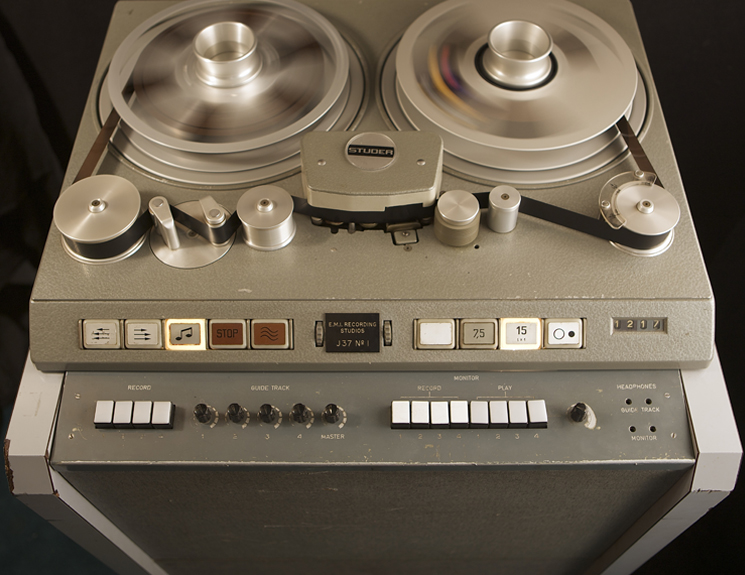 “After he had very laboriously stuck them all back together again, we played the tape and I said: ‘That piece there’s a bit too much like the original. Turn it round the other way, backwards.’ We went on like that until the tape was a whole amalgam of carousel noises, but meaningless in musical terms because it was composed of fragments of tunes connected in a series of fractions of a second. It was quite an unreal hotch-potch of sound, arrived at without rhyme or reason; but when it was added as a background ‘wash’…it did give an overall impression of being in a circus.” “After he had very laboriously stuck them all back together again, we played the tape and I said: ‘That piece there’s a bit too much like the original. Turn it round the other way, backwards.’ We went on like that until the tape was a whole amalgam of carousel noises, but meaningless in musical terms because it was composed of fragments of tunes connected in a series of fractions of a second. It was quite an unreal hotch-potch of sound, arrived at without rhyme or reason; but when it was added as a background ‘wash’…it did give an overall impression of being in a circus.”
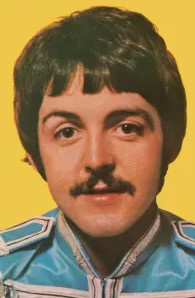 However, while this was being done in the control room, things were getting a little tense out on the studio floor. “Because they couldn’t play and jam,” Geoff Emerick remembers regarding the group’s instruments being secured in another studio, “the four Beatles were getting impatient with how long it was taking us to assemble the sounds. They were out in the studio area amusing themselves as best they could, but they kept popping into the control room, saying ‘Aren’t you lot done yet?’ At one point John came in and he was actually quite aggravated, but Paul calmed him down, saying, ‘Look, it’s a process and it just takes a certain amount of time. You have to expect that.’” However, while this was being done in the control room, things were getting a little tense out on the studio floor. “Because they couldn’t play and jam,” Geoff Emerick remembers regarding the group’s instruments being secured in another studio, “the four Beatles were getting impatient with how long it was taking us to assemble the sounds. They were out in the studio area amusing themselves as best they could, but they kept popping into the control room, saying ‘Aren’t you lot done yet?’ At one point John came in and he was actually quite aggravated, but Paul calmed him down, saying, ‘Look, it’s a process and it just takes a certain amount of time. You have to expect that.’”
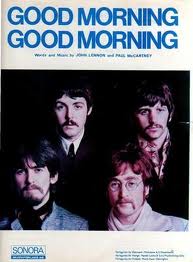 The “process” was completed on this day, nineteen pieces of tape being edited together to comprise “some thirty seconds of background sound,” as Geoff Emerick remembered it. “It really worked well,” George Martin proudly related. “And of course John was delighted with the end result.” The compiled sound effects tape was not superimposed onto the master tape on this day, however, this not happening until after a bit more overdubbing was done to the song first. After a preliminary mono mix of the song “Good Morning Good Morning” was made, the session was over, being already 2:15 am the following day. The “process” was completed on this day, nineteen pieces of tape being edited together to comprise “some thirty seconds of background sound,” as Geoff Emerick remembered it. “It really worked well,” George Martin proudly related. “And of course John was delighted with the end result.” The compiled sound effects tape was not superimposed onto the master tape on this day, however, this not happening until after a bit more overdubbing was done to the song first. After a preliminary mono mix of the song “Good Morning Good Morning” was made, the session was over, being already 2:15 am the following day.
 With multiple other “Sgt. Pepper” tracks taking precedence, “Being For The Benefit Of Mr. Kite!” took a backseat until March 28th, 1967. The Beatles entered EMI Studio Two at 7 pm (or thereabouts) and spent most of the evening doing extensive work on “Good Morning Good Morning.” Eventually, by approximately 3 am the following morning, attention was then paid to “Mr. Kite!” by adding a series of overdubs. With multiple other “Sgt. Pepper” tracks taking precedence, “Being For The Benefit Of Mr. Kite!” took a backseat until March 28th, 1967. The Beatles entered EMI Studio Two at 7 pm (or thereabouts) and spent most of the evening doing extensive work on “Good Morning Good Morning.” Eventually, by approximately 3 am the following morning, attention was then paid to “Mr. Kite!” by adding a series of overdubs.
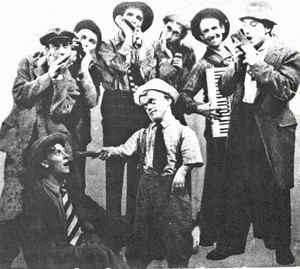 “We all loved ‘The Morton Fraser Harmonica Gang’ when we were kids” stated McCartney in the documentary “The Making Of Sgt. Pepper.” “It was a little TV thing, but it was those giant big bass (harmonicas), and John played a bit of harmonica, so we always liked that. But, when I heard them on ‘Pet Sounds’ – there’s a lot of bass harmonica, (Brian Wilson) uses that. It was the instruments he uses and the way he places them against each other. It’s very cleverly done. It’s a really clever album. So we were inspired by it, you know, and nicked a few ideas.” “We all loved ‘The Morton Fraser Harmonica Gang’ when we were kids” stated McCartney in the documentary “The Making Of Sgt. Pepper.” “It was a little TV thing, but it was those giant big bass (harmonicas), and John played a bit of harmonica, so we always liked that. But, when I heard them on ‘Pet Sounds’ – there’s a lot of bass harmonica, (Brian Wilson) uses that. It was the instruments he uses and the way he places them against each other. It’s very cleverly done. It’s a really clever album. So we were inspired by it, you know, and nicked a few ideas.”
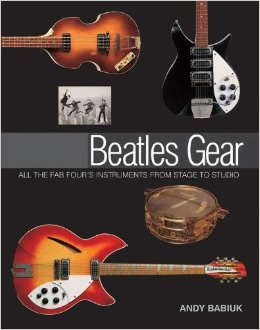 Andy Babiuk’s 2001 book “Beatles Gear” states that “the group happened upon a pair of Hohner bass harmonicas to accentuate the chord changes” of the song, this being the first overdub performed on this day. As to who played the harmonicas on this overdub, a picture exists of this day showing George Harrison playing one of the huge bass harmonicas while John plays his normal size Hohner instrument. Add to this George Martin’s quote that “road managers Mal Evans and Neil Aspinall played mouth organs” and the book “The Beatles Recording Sessions” adding Ringo into the mix, this undoubtedly made for an interesting and possibly humorous overdub session. Andy Babiuk’s 2001 book “Beatles Gear” states that “the group happened upon a pair of Hohner bass harmonicas to accentuate the chord changes” of the song, this being the first overdub performed on this day. As to who played the harmonicas on this overdub, a picture exists of this day showing George Harrison playing one of the huge bass harmonicas while John plays his normal size Hohner instrument. Add to this George Martin’s quote that “road managers Mal Evans and Neil Aspinall played mouth organs” and the book “The Beatles Recording Sessions” adding Ringo into the mix, this undoubtedly made for an interesting and possibly humorous overdub session.
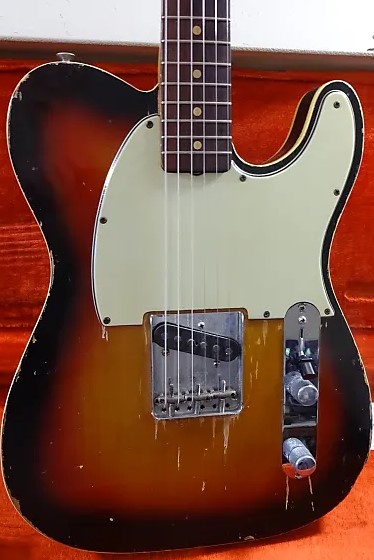 Two more overdubs were performed on this day, one being an “oom-pah-style organ played by John,” as described by Geoff Emerick. Interestingly, the second overdub consisted of Paul playing an electric guitar solo, as reported on by Mal Evans and Neil Aspinall in a magazine piece for the June 1967 issue of “The Beatles Monthly Book.” A picture from this day is included in this piece showing Paul playing his newly acquired Fender Esquire electric guitar. This guitar solo is evidenced in the second half of the first instrumental section of the song. By 4:45 am, the session ended with yet more extensive work to be done to “Mr. Kite!” Two more overdubs were performed on this day, one being an “oom-pah-style organ played by John,” as described by Geoff Emerick. Interestingly, the second overdub consisted of Paul playing an electric guitar solo, as reported on by Mal Evans and Neil Aspinall in a magazine piece for the June 1967 issue of “The Beatles Monthly Book.” A picture from this day is included in this piece showing Paul playing his newly acquired Fender Esquire electric guitar. This guitar solo is evidenced in the second half of the first instrumental section of the song. By 4:45 am, the session ended with yet more extensive work to be done to “Mr. Kite!”
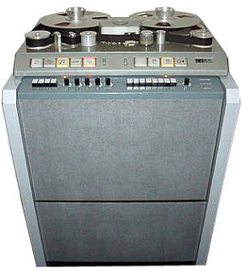 The next recording session for the song occurred the following day (actually later that same day), March 29th, 1967 in EMI Studio Two, again scheduled to begin at 7 pm. After some final recording was done for “Good Morning Good Morning,” the elaborate sound effect montage they had constructed for “Mr. Kite!” was inserted into both the waltz instrumental section and the end of the song, being predominantly heard during the conclusion. This work on the song began approximately at 8 pm on this day. The next recording session for the song occurred the following day (actually later that same day), March 29th, 1967 in EMI Studio Two, again scheduled to begin at 7 pm. After some final recording was done for “Good Morning Good Morning,” the elaborate sound effect montage they had constructed for “Mr. Kite!” was inserted into both the waltz instrumental section and the end of the song, being predominantly heard during the conclusion. This work on the song began approximately at 8 pm on this day.
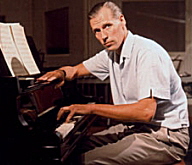 George Martin explains a further overdub performed at this day's session: “When we came to the middle section of the song, where ‘Henry the Horse dances the waltz,’ John said he wanted the music to ‘swirl up and around,’ to give it a circus atmosphere. As usual, having written a great song, John said to me, ‘Do what you can with it,’ and walked away, leaving me to it…John and I did our thing on two electric organs, a Wurlitzer and a Hammond. John was to play the basic tune, and around it I was to play the swirly noises – chromatic runs based on it.” George Martin explains a further overdub performed at this day's session: “When we came to the middle section of the song, where ‘Henry the Horse dances the waltz,’ John said he wanted the music to ‘swirl up and around,’ to give it a circus atmosphere. As usual, having written a great song, John said to me, ‘Do what you can with it,’ and walked away, leaving me to it…John and I did our thing on two electric organs, a Wurlitzer and a Hammond. John was to play the basic tune, and around it I was to play the swirly noises – chromatic runs based on it.”
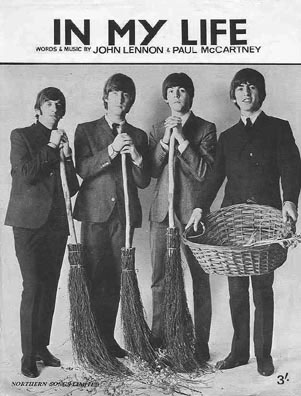 “Unfortunately, my digital capacities on an organ fall short of spectacular, and I found that I couldn’t achieve the speed I wanted for these runs. So I told John: ‘What we’ll do is to slow the whole thing down by a half. You play the tune twice as slow and an octave down, and I’ll do my runs as fast as I can, but an octave down as well. Then, when we double the tape speed, it’ll come out all nice and smooth and very swirly.’ Of course, we could always have got a professional organist in to do it, but our attitude was ‘Why the hell! Why should we let someone else in on our fun?’ Besides, we were doing it all off the top of our heads: to bring someone else in would have meant delay and a lot of tedious explanation.” So, George Martin pulled off his half-speed trick once again as he had done on 1965’s “In My Life.” “Unfortunately, my digital capacities on an organ fall short of spectacular, and I found that I couldn’t achieve the speed I wanted for these runs. So I told John: ‘What we’ll do is to slow the whole thing down by a half. You play the tune twice as slow and an octave down, and I’ll do my runs as fast as I can, but an octave down as well. Then, when we double the tape speed, it’ll come out all nice and smooth and very swirly.’ Of course, we could always have got a professional organist in to do it, but our attitude was ‘Why the hell! Why should we let someone else in on our fun?’ Besides, we were doing it all off the top of our heads: to bring someone else in would have meant delay and a lot of tedious explanation.” So, George Martin pulled off his half-speed trick once again as he had done on 1965’s “In My Life.”
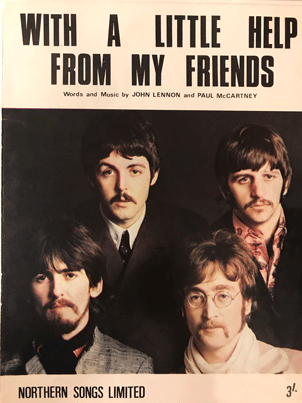 By around midnight or so, the focus was then put onto a new song idea that was eventually known as “With A Little Help From My Friends,” this bringing the session to 5:45 the following morning. The finishing touches for “Mr. Kite!” were still to come. By around midnight or so, the focus was then put onto a new song idea that was eventually known as “With A Little Help From My Friends,” this bringing the session to 5:45 the following morning. The finishing touches for “Mr. Kite!” were still to come.
March 31st, 1967 was the final recording session that included “Mr. Kite!,” although it is possible that The Beatles were not present for this session at all. This was, in fact, a session intended for creating mono mixes for the album, this beginning at 7 pm in the control room of EMI Studio Two with the production team of George Martin, Geoff Emerick and Richard Lush. After the mono mix of “With A Little Help From My Friends” was complete at around 8:30 pm or so, George Martin made his way onto the studio floor to add some more overdubs to “Mr. Kite!”
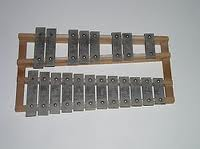 It looks as though their focus was on the final seconds of the song. Geoff Emerick describes these additional overdubs this way: “Later on, ‘Being For The Benefit Of Mr. Kite!’ was embellished with…chromatic organ runs and a glockenspiel – both recorded at half speed.” A glockenspiel is a xylophone-like percussion instrument that is usually fashioned with high pitched metal plates. George Martin apparently played this complicated organ run at half speed and then played the same run on the glockenspiel on top of it as another overdub to compliment the song's conclusion. Since it is not documented anywhere, he undoubtedly performed the pounding piano chords that introduce the final verse as an overdub on this day as well. It looks as though their focus was on the final seconds of the song. Geoff Emerick describes these additional overdubs this way: “Later on, ‘Being For The Benefit Of Mr. Kite!’ was embellished with…chromatic organ runs and a glockenspiel – both recorded at half speed.” A glockenspiel is a xylophone-like percussion instrument that is usually fashioned with high pitched metal plates. George Martin apparently played this complicated organ run at half speed and then played the same run on the glockenspiel on top of it as another overdub to compliment the song's conclusion. Since it is not documented anywhere, he undoubtedly performed the pounding piano chords that introduce the final verse as an overdub on this day as well.
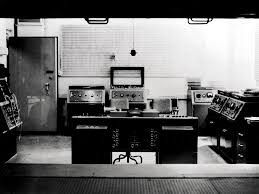 This being done, it was time to construct the song's official mono mix using "take nine." Seven attempts were made by George Martin and engineers Geoff Emerick and Richard Lush in the EMI Studio Two control room, the fourth attempt being deemed best and ready for inclusion on the mono edition of the "Sgt Pepper" album. This mono mix is noteworthy for more presence that was given to the sound effects that were recorded for the waltz instrumental section of the song. This being done, it was time to construct the song's official mono mix using "take nine." Seven attempts were made by George Martin and engineers Geoff Emerick and Richard Lush in the EMI Studio Two control room, the fourth attempt being deemed best and ready for inclusion on the mono edition of the "Sgt Pepper" album. This mono mix is noteworthy for more presence that was given to the sound effects that were recorded for the waltz instrumental section of the song.
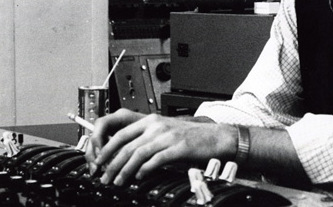 The stereo mix was created on April 7th, 1967, in the control room of EMI Studio Two by the same production staff. Eight attempts were made for this stereo mix, presumably the final eighth mix being the best. The original rhythm track is panned to the left channel while all of the vocals are positioned over to the right channel. George Martin’s melodic organ playing is in the right channel as well, while the harmonicas are centered in the mix. The sound effect montage is more subdued during the waltz instrumental section and is heard primarily in the left channel at that time, but this montage spans the stereo landscape in the conclusion of the song to create a tantalizing experience when listening with headphones. The stereo mix was created on April 7th, 1967, in the control room of EMI Studio Two by the same production staff. Eight attempts were made for this stereo mix, presumably the final eighth mix being the best. The original rhythm track is panned to the left channel while all of the vocals are positioned over to the right channel. George Martin’s melodic organ playing is in the right channel as well, while the harmonicas are centered in the mix. The sound effect montage is more subdued during the waltz instrumental section and is heard primarily in the left channel at that time, but this montage spans the stereo landscape in the conclusion of the song to create a tantalizing experience when listening with headphones.
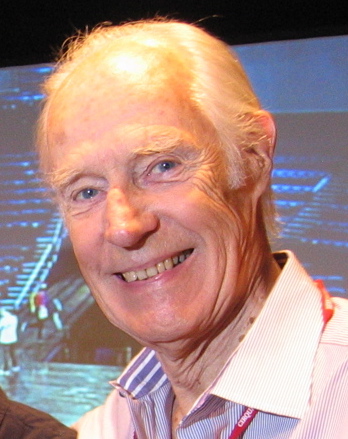 At some point in 1995, George Martin and Geoff Emerick returned to the original "Mr. Kite" tapes while putting together selections for the compilation album "Anthology 2." Two "Mr. Kite!" tracks were created at that time, one being a composite of "take one" and "take two," the second selection being "take seven" featuring the backwards tape montage now "flown in" during the final seconds of the song. At some point in 1995, George Martin and Geoff Emerick returned to the original "Mr. Kite" tapes while putting together selections for the compilation album "Anthology 2." Two "Mr. Kite!" tracks were created at that time, one being a composite of "take one" and "take two," the second selection being "take seven" featuring the backwards tape montage now "flown in" during the final seconds of the song.
 Sometime between 2004 and 2006, George Martin and son Giles Martin returned to EMI (Abbey Road) Studios to create special mixes of many Beatles tracks for the Cirque du Soleil show “Love.” “Mr. Kite!” got special treatment on this day, a new mix being created with less of a stereo separation than the original (all vocals centered) but with many surprises. Horse sound effects from “Good Morning Good Morning” are heard during the “Henry the horse” waltz section, sinister-sounding laughing that The Beatles recorded during the first session for the song "Piggies" is heard during the line “a splendid time is guaranteed for all,” and then the conclusion of the song merges the heavy winding ending of “I Want You (She’s So Heavy)” with some blood-curdling screams by Paul from “Helter Skelter,” all enclosed in heavy reverb and then ending suddenly with nothing but the wind blowing. Sounds as if George Martin may have finally given in to some pot smoking of his own! Sometime between 2004 and 2006, George Martin and son Giles Martin returned to EMI (Abbey Road) Studios to create special mixes of many Beatles tracks for the Cirque du Soleil show “Love.” “Mr. Kite!” got special treatment on this day, a new mix being created with less of a stereo separation than the original (all vocals centered) but with many surprises. Horse sound effects from “Good Morning Good Morning” are heard during the “Henry the horse” waltz section, sinister-sounding laughing that The Beatles recorded during the first session for the song "Piggies" is heard during the line “a splendid time is guaranteed for all,” and then the conclusion of the song merges the heavy winding ending of “I Want You (She’s So Heavy)” with some blood-curdling screams by Paul from “Helter Skelter,” all enclosed in heavy reverb and then ending suddenly with nothing but the wind blowing. Sounds as if George Martin may have finally given in to some pot smoking of his own!
 And then, sometime between 2016 and 2017, Giles Martin and engineer Sam Okell brought out all of the tapes for "Mr. Kite!" to create a new mix of the song for inclusion in the 50th Anniversary Editions of the "Sgt. Pepper" album. This vibrant stereo mix, based on the preferred mono mix from 1967, was also accompanied by two bonus tracks, one of "take four" and the other of "take seven," both of which were made available in various editions of this special release. And then, sometime between 2016 and 2017, Giles Martin and engineer Sam Okell brought out all of the tapes for "Mr. Kite!" to create a new mix of the song for inclusion in the 50th Anniversary Editions of the "Sgt. Pepper" album. This vibrant stereo mix, based on the preferred mono mix from 1967, was also accompanied by two bonus tracks, one of "take four" and the other of "take seven," both of which were made available in various editions of this special release.
Song Structure and Style
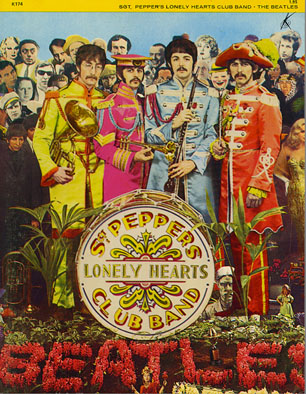 Likely with hardly anyone being aware of it, “Mr. Kite” consists entirely of verses, three with vocals and two entirely instrumental. So the structure here is ‘verse/ verse/ verse (instrumental)/ verse/ verse (instrumental)’ (or aaaaa), the very first time in the entire Beatles catalog we don’t see a bridge, refrain, chorus or unique instrumental section. Aside from a brief three-measure introduction, these verses are of varying lengths as well, as we shall describe below. Likely with hardly anyone being aware of it, “Mr. Kite” consists entirely of verses, three with vocals and two entirely instrumental. So the structure here is ‘verse/ verse/ verse (instrumental)/ verse/ verse (instrumental)’ (or aaaaa), the very first time in the entire Beatles catalog we don’t see a bridge, refrain, chorus or unique instrumental section. Aside from a brief three-measure introduction, these verses are of varying lengths as well, as we shall describe below.
Add to this that it is quite hard to determine which key this song is in. While there are many theories, arguably the most convincing answer would be D minor, which is they key that all of the vocal verses end in, thereby giving the listener a solid landing point, allowing him to get his bearings.
 The brief introduction is actually a foreshadowing of the final three chords of the second and third verses, but played more slowly to accompany an organ riff played by George Martin on top of the rhythm track of pounding toms (Ringo), bass guitar (Paul) subtle maracas (George) and the plethora of harmonica players, all setting the circus-like atmosphere. The third of these chords is the home key of D minor, although this is quickly dissolved to make way for a transitional chord (G major) to move us into the first verse that follows. This transitional chord on the organ, harmonicas and bass guitar is accompanied by Ringo’s tightly-tuned snare drum roll, played as if to quickly divert our attention to the center ring for the start of the show. The brief introduction is actually a foreshadowing of the final three chords of the second and third verses, but played more slowly to accompany an organ riff played by George Martin on top of the rhythm track of pounding toms (Ringo), bass guitar (Paul) subtle maracas (George) and the plethora of harmonica players, all setting the circus-like atmosphere. The third of these chords is the home key of D minor, although this is quickly dissolved to make way for a transitional chord (G major) to move us into the first verse that follows. This transitional chord on the organ, harmonicas and bass guitar is accompanied by Ringo’s tightly-tuned snare drum roll, played as if to quickly divert our attention to the center ring for the start of the show.
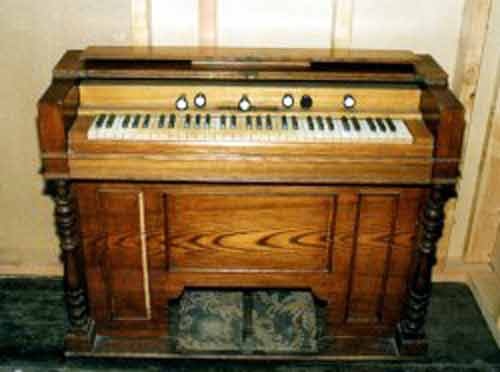 The first verse is fourteen measures long and consists primarily of John’s double-tracked lead vocals and Paul’s thumping but melodic bass runs set against George Martin’s harmonium performance and Ringo’s open hi-hat accents on the two- and four-beat of each measure. C minor appears to be the home key of the song for these first measures, but this quickly changes as John's lyric “over men and horses” ushers in the eighth measure and the actual home key of D minor. The arrangement changes as well, Ringo focusing once again on his toms alone, as if to avoid the snare altogether until attention needs to be focused on the center ring a little later. The eleventh and twelfth measures bring in Paul and George’s harmonies on the highly-reverbed phrase “in this way Mr. K. will challenge the world-dah,” the last exaggerated syllable sung by John alone. This is followed by a truncated replica of the introduction of the song, complete with the organ riff, the harmonica menagerie and the snare drum roll. The first verse is fourteen measures long and consists primarily of John’s double-tracked lead vocals and Paul’s thumping but melodic bass runs set against George Martin’s harmonium performance and Ringo’s open hi-hat accents on the two- and four-beat of each measure. C minor appears to be the home key of the song for these first measures, but this quickly changes as John's lyric “over men and horses” ushers in the eighth measure and the actual home key of D minor. The arrangement changes as well, Ringo focusing once again on his toms alone, as if to avoid the snare altogether until attention needs to be focused on the center ring a little later. The eleventh and twelfth measures bring in Paul and George’s harmonies on the highly-reverbed phrase “in this way Mr. K. will challenge the world-dah,” the last exaggerated syllable sung by John alone. This is followed by a truncated replica of the introduction of the song, complete with the organ riff, the harmonica menagerie and the snare drum roll.
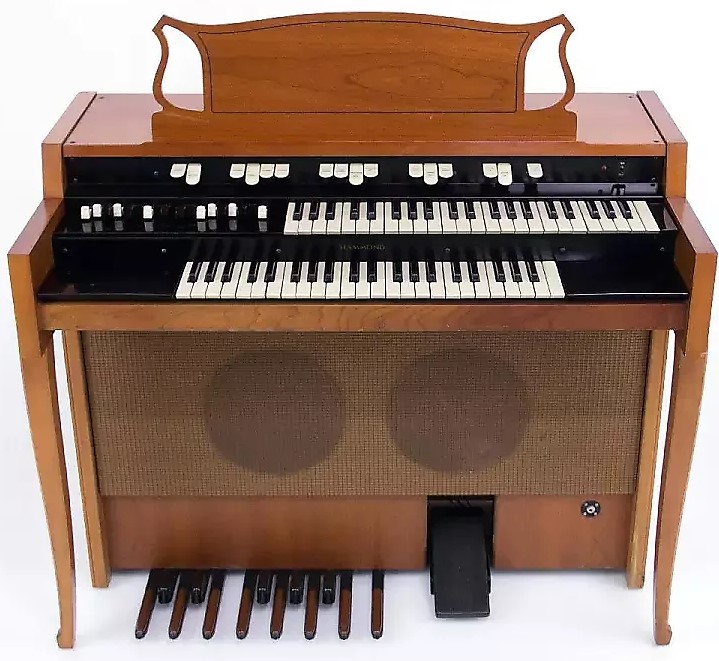 The second verse appears identical to the first arrangement-wise, although it is cut short at the eleventh measure on the word “waltz” to introduce the first instrumental verse in 6/8 time and in an elevated key. This third verse consists of Lennon on Hammond organ and George Martin on Wurlitzer organ, both of these being performed at half time so George Martin could play the fast descending swirly organ riffs. An interesting electric guitar solo from Paul, which was accentuated with much reverb, comes in at the eighth measure along with an overdubbed organ (played by George Martin) which mimics Paul’s melodic lines with subtle evidences of the spliced tape effects looming in the background. This is all placed on top of the drum, bass and harmonium rhythm track. It all abruptly grinds to a halt in the twelfth measure as the crashing piano chords and pounding drums of the thirteenth measure bring us back from the “Henry the horse” fantasy to the next feature of the circus. The second verse appears identical to the first arrangement-wise, although it is cut short at the eleventh measure on the word “waltz” to introduce the first instrumental verse in 6/8 time and in an elevated key. This third verse consists of Lennon on Hammond organ and George Martin on Wurlitzer organ, both of these being performed at half time so George Martin could play the fast descending swirly organ riffs. An interesting electric guitar solo from Paul, which was accentuated with much reverb, comes in at the eighth measure along with an overdubbed organ (played by George Martin) which mimics Paul’s melodic lines with subtle evidences of the spliced tape effects looming in the background. This is all placed on top of the drum, bass and harmonium rhythm track. It all abruptly grinds to a halt in the twelfth measure as the crashing piano chords and pounding drums of the thirteenth measure bring us back from the “Henry the horse” fantasy to the next feature of the circus.
 Now back in the original key as witnessed in the previous verses, the final vocal verse of the song appears next, this being thirteen measures long. The instrumentation is the same as witnessed in the previous two vocal verses but with the addition of the spliced tape effects coming in on the twelfth measure at full volume, this new element continuing until the conclusion of the song. Now back in the original key as witnessed in the previous verses, the final vocal verse of the song appears next, this being thirteen measures long. The instrumentation is the same as witnessed in the previous two vocal verses but with the addition of the spliced tape effects coming in on the twelfth measure at full volume, this new element continuing until the conclusion of the song.
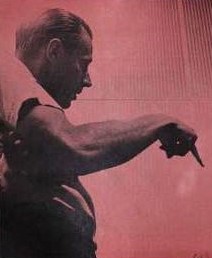 This segues into a final instrumental verse which is in the very same key heard in the previous instrumental verse. The original rhythm track and tape effects are augmented by John on ‘oom-pah’ style organ playing and the main melody line of the verses played by George Martin on the organ. This final verse ends up being eighteen measures long, so after the melody line George Martin is playing has run its course, he fills in the thirteenth through sixteenth verses with a simple repeating calliope-like melodic line. This fills the void until the instruments hold out the final chord on the downbeat of the seventeenth measure. George Martin’s impressive half-speed organ/glockenspiel run finishes out the final two measures as the reverbed final note vaporizes in the air before us. Breathtaking! This segues into a final instrumental verse which is in the very same key heard in the previous instrumental verse. The original rhythm track and tape effects are augmented by John on ‘oom-pah’ style organ playing and the main melody line of the verses played by George Martin on the organ. This final verse ends up being eighteen measures long, so after the melody line George Martin is playing has run its course, he fills in the thirteenth through sixteenth verses with a simple repeating calliope-like melodic line. This fills the void until the instruments hold out the final chord on the downbeat of the seventeenth measure. George Martin’s impressive half-speed organ/glockenspiel run finishes out the final two measures as the reverbed final note vaporizes in the air before us. Breathtaking!
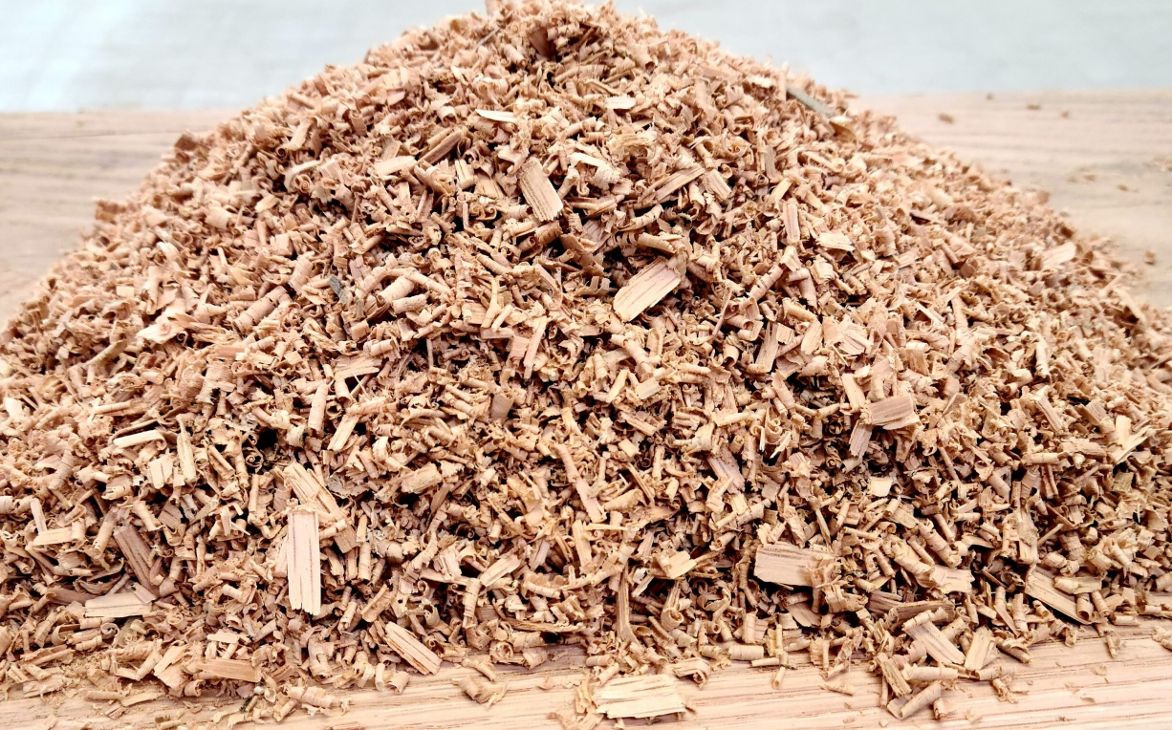 John puts in a spirited performance on vocals as he very succinctly enunciates every detail of the circus performances as suggested by Paul after "take two," even adding '60s phrases like “what a scene” in order to modernize the song a bit. John's organ and harmonica playing also helps him to create the “smell the sawdust” atmosphere he wanted. John puts in a spirited performance on vocals as he very succinctly enunciates every detail of the circus performances as suggested by Paul after "take two," even adding '60s phrases like “what a scene” in order to modernize the song a bit. John's organ and harmonica playing also helps him to create the “smell the sawdust” atmosphere he wanted.
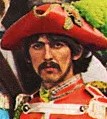 Although not overdubbed at a later time as with a lot of the “Pepper” tracks, Paul’s bass performance is bouncy and very appropriate for the song. His lead guitar part is hardly recognizable as a guitar at all, fitting in nicely with the "big top" in a way no one would expect. And, as usual, his background harmonies are perfect. Although not overdubbed at a later time as with a lot of the “Pepper” tracks, Paul’s bass performance is bouncy and very appropriate for the song. His lead guitar part is hardly recognizable as a guitar at all, fitting in nicely with the "big top" in a way no one would expect. And, as usual, his background harmonies are perfect.
While George nowhere touches a guitar on this song, his performance on bass harmonica as well as background vocals (not to mention his maraca shaking from the rhythm track) shows him cooperative to the spirit of the occasion. Ringo also puts in his suitably perfect performance as a circus drummer extraordinaire. Knowing his usual four-in-the-bar rock drumming wouldn’t quite fit here, Ringo worked with suggestions from the others to create the perfect landscape.
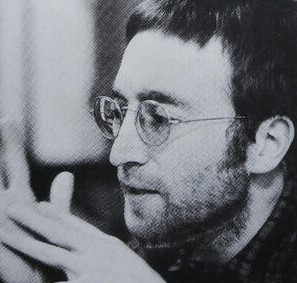 George Martin’s contribution to the “Sgt. Pepper” album as a whole was definitely noticed by most, one reviewer at the time praising the album as “George Martin’s best record.” This overall attitude was taken on the chin by the group, John Lennon in particular. “I’d like to hear George Martin’s music, please. Just play me some,” John anglily responded in 1970 when asked about George Martin's input in The Beatles’ recordings. All this being said, George Martin’s presence is most definitely apparent on “Mr. Kite,” with his elaborate harmonium, organ and glockenspiel playing, some of which were played at half-speed to get the required speed and effect. Not to mention his ingenuity, along with Geoff Emerick, in creating the fantastic backdrop of tape effects which complete the picture. George Martin’s contribution to the “Sgt. Pepper” album as a whole was definitely noticed by most, one reviewer at the time praising the album as “George Martin’s best record.” This overall attitude was taken on the chin by the group, John Lennon in particular. “I’d like to hear George Martin’s music, please. Just play me some,” John anglily responded in 1970 when asked about George Martin's input in The Beatles’ recordings. All this being said, George Martin’s presence is most definitely apparent on “Mr. Kite,” with his elaborate harmonium, organ and glockenspiel playing, some of which were played at half-speed to get the required speed and effect. Not to mention his ingenuity, along with Geoff Emerick, in creating the fantastic backdrop of tape effects which complete the picture.
American Releases
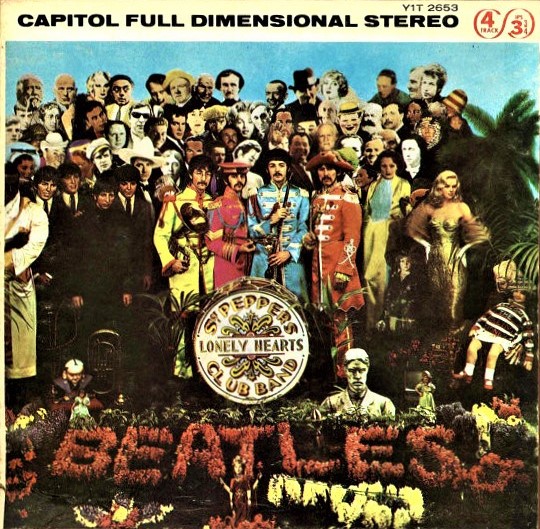 June 2nd, 1967 became the release date for “Sgt. Pepper’s Lonely Hearts Club Band” in the US. An early running order for the album placed “Mr. Kite” as the third track (the first Lennon lead vocal of the album) directly after “With A Little Help From My Friends.” This undoubtedly indicated their favorable impression of how the song came out, although having “Kite” become the final word on side one turned out to be a most effective position. Capitol mistakenly omited the exclamation point after the word "Kite" on the actual record label of this initial release, not unlike their title "You Know My Name (Look Up My Number)" on the US label of this single three years later, but the exclamation point is in its proper place, as it should be, on every US "Sgt Pepper" back cover. This album continued to be reissued on vinyl in the US throughout the years. June 2nd, 1967 became the release date for “Sgt. Pepper’s Lonely Hearts Club Band” in the US. An early running order for the album placed “Mr. Kite” as the third track (the first Lennon lead vocal of the album) directly after “With A Little Help From My Friends.” This undoubtedly indicated their favorable impression of how the song came out, although having “Kite” become the final word on side one turned out to be a most effective position. Capitol mistakenly omited the exclamation point after the word "Kite" on the actual record label of this initial release, not unlike their title "You Know My Name (Look Up My Number)" on the US label of this single three years later, but the exclamation point is in its proper place, as it should be, on every US "Sgt Pepper" back cover. This album continued to be reissued on vinyl in the US throughout the years.
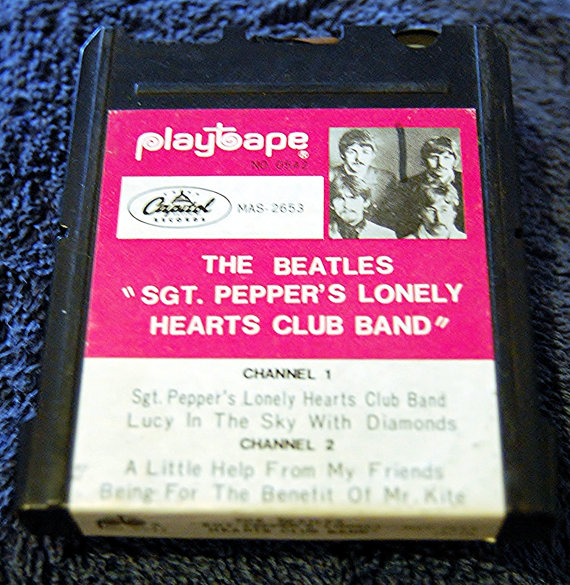 Sometime in 1967, Capitol released Beatles music on a brand new but short-lived format called "Playtapes." These tapes did not have the capability to include entire albums, so Capitol released a four-song version of "Sgt. Pepper" in this portable format, "Being For The Benefit Of Mr. Kite!" being one of them. These "Playtapes" are little more than a curiosity for some today and are very hard to find and highly collectable. Sometime in 1967, Capitol released Beatles music on a brand new but short-lived format called "Playtapes." These tapes did not have the capability to include entire albums, so Capitol released a four-song version of "Sgt. Pepper" in this portable format, "Being For The Benefit Of Mr. Kite!" being one of them. These "Playtapes" are little more than a curiosity for some today and are very hard to find and highly collectable.
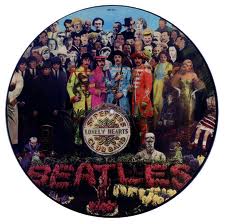 At some point during 1978, the album received an unusual but interesting re-release as a picture disc. The popularity of colored discs as well as picture discs at that time brought this album, as well as “Abbey Road,” into this enviable format, resulting in collectors clamoring to own a copy of this limited release until this day. Capitol then re-released the "Sgt. Pepper" album as a picture disc on December 15th, 2017 on 180 Gram vinyl using the new Giles Martin stereo mix. At some point during 1978, the album received an unusual but interesting re-release as a picture disc. The popularity of colored discs as well as picture discs at that time brought this album, as well as “Abbey Road,” into this enviable format, resulting in collectors clamoring to own a copy of this limited release until this day. Capitol then re-released the "Sgt. Pepper" album as a picture disc on December 15th, 2017 on 180 Gram vinyl using the new Giles Martin stereo mix.
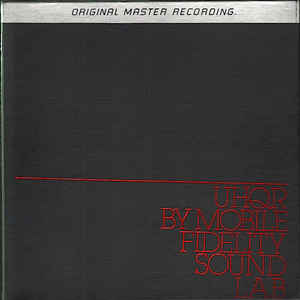 Next, two interesting American vinyl reissues of “Sgt. Pepper” were released as "Original Master Recording" editions as created by Mobile Fidelity Sound Lab. The first edition (containing matrix # UHQR "Ultra High Quality Recording" 1-100) was released in September of 1982 and listed for $40 per copy, more than five times the price of the standard version. This edition was limited to 5000 sequentially numbered copies, each weighing 200 grams (double the weight of conventional vinyl at that time) and packaged between layers of protective foam rubber in a thick box. The second edition from Mobile Fidelity Sound Lab was released in June of 1983 similar to the rest of the Beatles catalog released within their series. Both of these were prepared utilizing half-speed mastering technology from the original master tape on loan from EMI. These versions of “Sgt. Pepper” were only available for a short time and are quite collectible today. Next, two interesting American vinyl reissues of “Sgt. Pepper” were released as "Original Master Recording" editions as created by Mobile Fidelity Sound Lab. The first edition (containing matrix # UHQR "Ultra High Quality Recording" 1-100) was released in September of 1982 and listed for $40 per copy, more than five times the price of the standard version. This edition was limited to 5000 sequentially numbered copies, each weighing 200 grams (double the weight of conventional vinyl at that time) and packaged between layers of protective foam rubber in a thick box. The second edition from Mobile Fidelity Sound Lab was released in June of 1983 similar to the rest of the Beatles catalog released within their series. Both of these were prepared utilizing half-speed mastering technology from the original master tape on loan from EMI. These versions of “Sgt. Pepper” were only available for a short time and are quite collectible today.
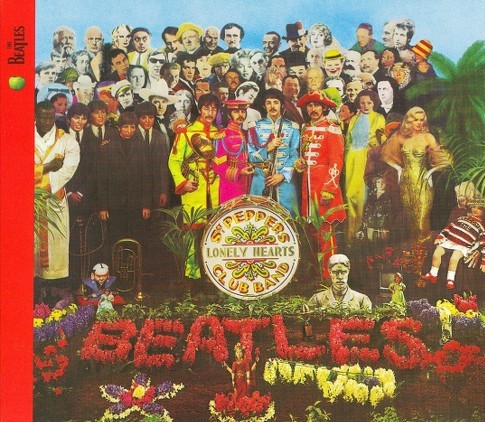 Then, on September 21st, 1987, a little over 20 years after its initial release, “Sgt. Pepper” got its first compact disc release, with liner notes mistakenly referring to the song as having been written entirely by John. The CD was then remastered and re-released on September 9th, 2009. Then, on September 21st, 1987, a little over 20 years after its initial release, “Sgt. Pepper” got its first compact disc release, with liner notes mistakenly referring to the song as having been written entirely by John. The CD was then remastered and re-released on September 9th, 2009.
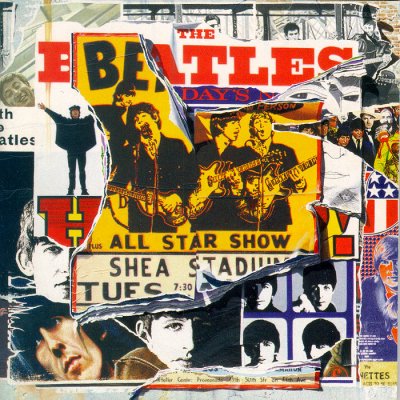 March 18th, 1996, was the US release date for the compilation album "Anthology 2," which featured the two developmental tracks of "Mr. Kite!" as detailed above, "takes one and two" and the composite "take seven." This album immediately topped the Billboard album chart in the US. March 18th, 1996, was the US release date for the compilation album "Anthology 2," which featured the two developmental tracks of "Mr. Kite!" as detailed above, "takes one and two" and the composite "take seven." This album immediately topped the Billboard album chart in the US.
November 20th, 2006 was the US release date for the above mentioned album “Love,” created entirely with the Cirque du Soleil show in mind, and featuring an incredibly unique mix of “Mr. Kite.”
 The original 1967 mono mix, which was not owned or even heard by most American Beatle enthusiasts, became available on CD within the elaborate box set “The Beatles In Mono” on September 9th, 2009, the vinyl edition being released on September 9th, 2014. Author Bruce Spizer, in his highly researched book “The Beatles’ Story On Capitol Records – Part Two,” claims the mono version of “Kite” as “the only song that is significantly better on the mono LP” because of it having “a superior mix of the special effects and organ music.” Reviews such as this, while not fully agreed upon by other writers, make “The Beatles In Mono” box set a "must have" for the serious Beatles fan. The original 1967 mono mix, which was not owned or even heard by most American Beatle enthusiasts, became available on CD within the elaborate box set “The Beatles In Mono” on September 9th, 2009, the vinyl edition being released on September 9th, 2014. Author Bruce Spizer, in his highly researched book “The Beatles’ Story On Capitol Records – Part Two,” claims the mono version of “Kite” as “the only song that is significantly better on the mono LP” because of it having “a superior mix of the special effects and organ music.” Reviews such as this, while not fully agreed upon by other writers, make “The Beatles In Mono” box set a "must have" for the serious Beatles fan.
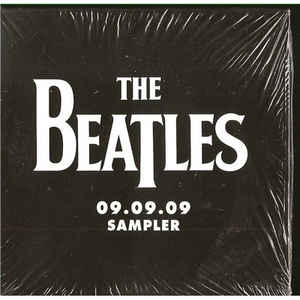 Also coming out on September 9th, 2009 in order to promote the current remastered Beatles catalog, the "09.09.09 Sampler" was distributed to retailers and radio programmers, "Being For The Benefit Of Mr. Kite!" being featured therein. This has become quite the find for collectors. Also coming out on September 9th, 2009 in order to promote the current remastered Beatles catalog, the "09.09.09 Sampler" was distributed to retailers and radio programmers, "Being For The Benefit Of Mr. Kite!" being featured therein. This has become quite the find for collectors.
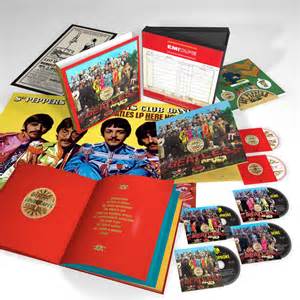 Another "must have" would definitely be the May 26th, 2017 release of the 50th Anniversary Edition of the "Sgt. Pepper" album with a brand new vibrant stereo mix of the album patterned after the preferred 1967 mono mix. "Being For The Benefit Of Mr. Kite!" never sounded better and is featured in all of the editions of this release. Also, the original "take four" had been included as a bonus track on both the "2 CD Anniversay Edition" and the "Super Deluxe Edition" box set, while "take seven" was also included in the aforementioned box set as well. Another "must have" would definitely be the May 26th, 2017 release of the 50th Anniversary Edition of the "Sgt. Pepper" album with a brand new vibrant stereo mix of the album patterned after the preferred 1967 mono mix. "Being For The Benefit Of Mr. Kite!" never sounded better and is featured in all of the editions of this release. Also, the original "take four" had been included as a bonus track on both the "2 CD Anniversay Edition" and the "Super Deluxe Edition" box set, while "take seven" was also included in the aforementioned box set as well.
Live Performances
Although The Beatles never performed the song live, you may, for pure fantasy reasons, want to view the animated simulation of the group's performance of “Mr. Kite” under a gazebo in Pepperland from the “Rock Band” video game.
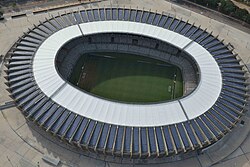 To surprise his audiences in 2013, however, Paul decided to include "Mr. Kite" in the set list for his "Out There!" tour, which began on May 4th, 2013 (at Estodio Mineireo in Belo Horizonte, Brazil) and concluded on October 22nd, 2015 (Buffalo, New York). Donning his Hofner violin-shaped bass, Paul sings lead while the calliope sound effects swirl around to give a spirited performance of a song that was never intended to be heard live. To surprise his audiences in 2013, however, Paul decided to include "Mr. Kite" in the set list for his "Out There!" tour, which began on May 4th, 2013 (at Estodio Mineireo in Belo Horizonte, Brazil) and concluded on October 22nd, 2015 (Buffalo, New York). Donning his Hofner violin-shaped bass, Paul sings lead while the calliope sound effects swirl around to give a spirited performance of a song that was never intended to be heard live.
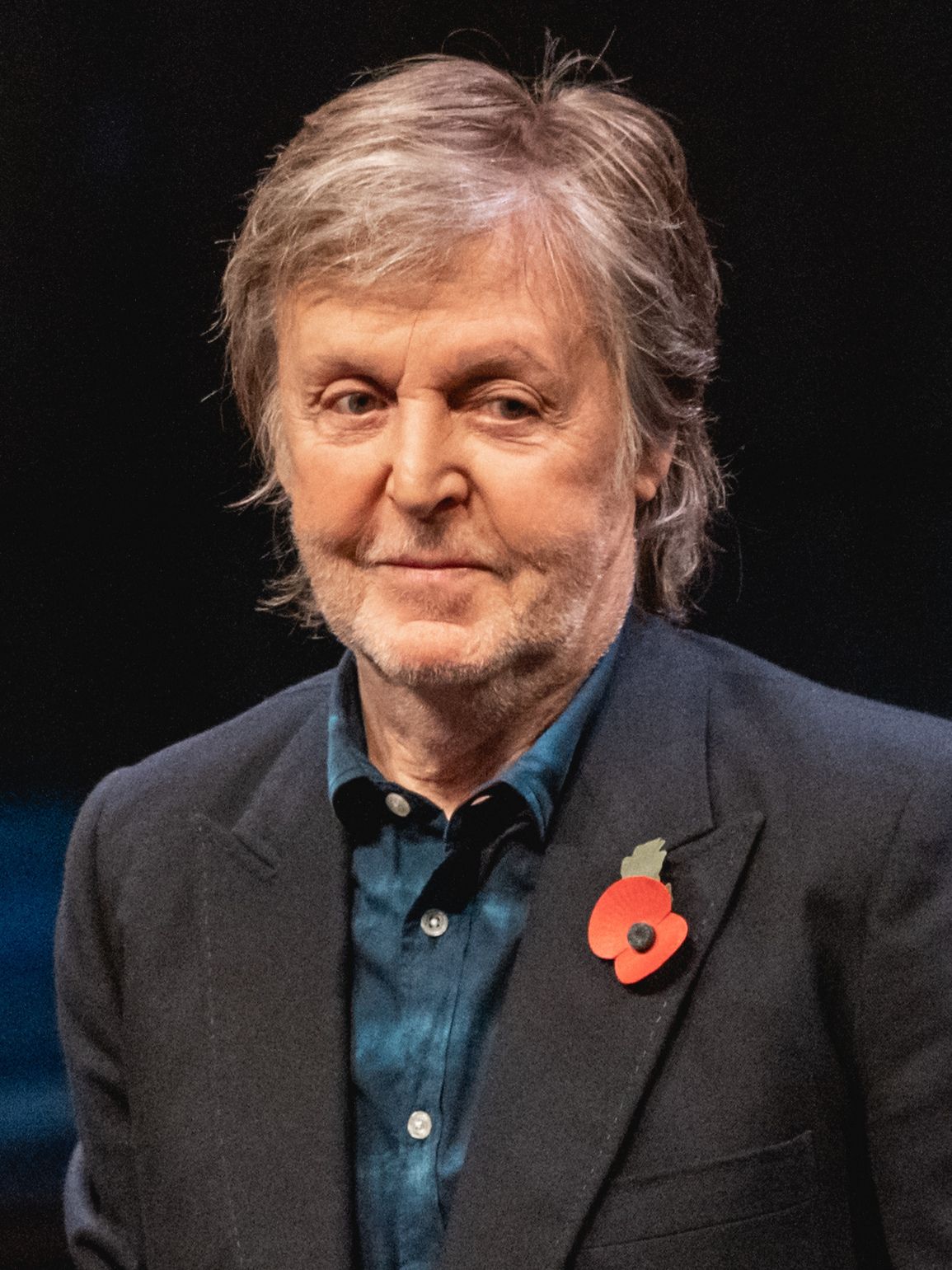 In a 2013 Rolling Stone magazine interview, Paul relates the intricacies of playing the song live. "’Mr. Kite’ is such a crazy, oddball song that I thought it would freshen up the set. Plus the fact that I'd never done it. None of us in The Beatles ever did that song (in concert)...That's challenging. I mean, something like ‘Being for the Benefit of Mr. Kite!’ is quite difficult to do. Ask any bass player who sings. It's contrapuntal, man! It really is. I have got to sing a melody that's going to one place, and then I have got to play this bassline that's going to other places. It's a concentration thing. But that's half the fun of the show. I'm still practicing, still trying to figure it out…It's like, ‘How does this one go again?’ But like I said, you have got to look what you're doing when you play that one." In a 2013 Rolling Stone magazine interview, Paul relates the intricacies of playing the song live. "’Mr. Kite’ is such a crazy, oddball song that I thought it would freshen up the set. Plus the fact that I'd never done it. None of us in The Beatles ever did that song (in concert)...That's challenging. I mean, something like ‘Being for the Benefit of Mr. Kite!’ is quite difficult to do. Ask any bass player who sings. It's contrapuntal, man! It really is. I have got to sing a melody that's going to one place, and then I have got to play this bassline that's going to other places. It's a concentration thing. But that's half the fun of the show. I'm still practicing, still trying to figure it out…It's like, ‘How does this one go again?’ But like I said, you have got to look what you're doing when you play that one."
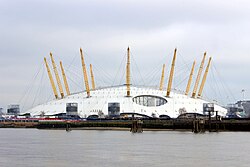 Paul continued to feature the song during his "One On One" concert tour, which stretched from April 13th, 2016 (Fresno, California) to December 16th, 2017 (Aukland, New Zealand), and then including it during his "Freshen Up" tour, this beginning on September 17th, 2018 (Quebeck City, Canada) and concluding on July 13th, 2019 (Los Angeles, California) and his "Got Back" tour, which ran from April 28th, 2022 (Spokane, Washington) to December 19th, 2024 at the 02 Arena (London, England). Paul continued to feature the song during his "One On One" concert tour, which stretched from April 13th, 2016 (Fresno, California) to December 16th, 2017 (Aukland, New Zealand), and then including it during his "Freshen Up" tour, this beginning on September 17th, 2018 (Quebeck City, Canada) and concluding on July 13th, 2019 (Los Angeles, California) and his "Got Back" tour, which ran from April 28th, 2022 (Spokane, Washington) to December 19th, 2024 at the 02 Arena (London, England).
Conclusion
 It’s really quite telling how John quickly dismissed the whole “Sgt. Pepper” album – even as early as late 1967. “When you get down to it, it was nothing more than an album called ‘Sgt. Pepper’ with the tracks stuck together. It was a beautiful idea then that doesn’t mean a thing now.” Regarding the elaborate production, he asserted back then: “I actively dislike bits of them which didn’t come out right…Some of the sound in ‘Mr. Kite’ isn’t right.” It’s really quite telling how John quickly dismissed the whole “Sgt. Pepper” album – even as early as late 1967. “When you get down to it, it was nothing more than an album called ‘Sgt. Pepper’ with the tracks stuck together. It was a beautiful idea then that doesn’t mean a thing now.” Regarding the elaborate production, he asserted back then: “I actively dislike bits of them which didn’t come out right…Some of the sound in ‘Mr. Kite’ isn’t right.”
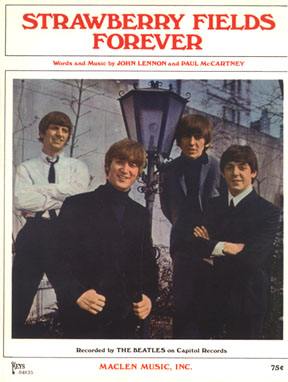 While his more earthy or personal tracks, such as “I’m So Tired” and “Strawberry Fields Forever,” are said to be among his favorites, the playful and/or humorous side of his compositional style did not seem to matter very much to him in the long run. Altering the circus poster’s words “The Celebrated Horse Zanthus” to “of course, Henry the horse dances the waltz,” for example, is just stereotypical John Lennon tomfoolery. The picturesque imagery along with the in-jokes of such lyrics does much to tantalize the listener, but apparently not much for John. While his more earthy or personal tracks, such as “I’m So Tired” and “Strawberry Fields Forever,” are said to be among his favorites, the playful and/or humorous side of his compositional style did not seem to matter very much to him in the long run. Altering the circus poster’s words “The Celebrated Horse Zanthus” to “of course, Henry the horse dances the waltz,” for example, is just stereotypical John Lennon tomfoolery. The picturesque imagery along with the in-jokes of such lyrics does much to tantalize the listener, but apparently not much for John.
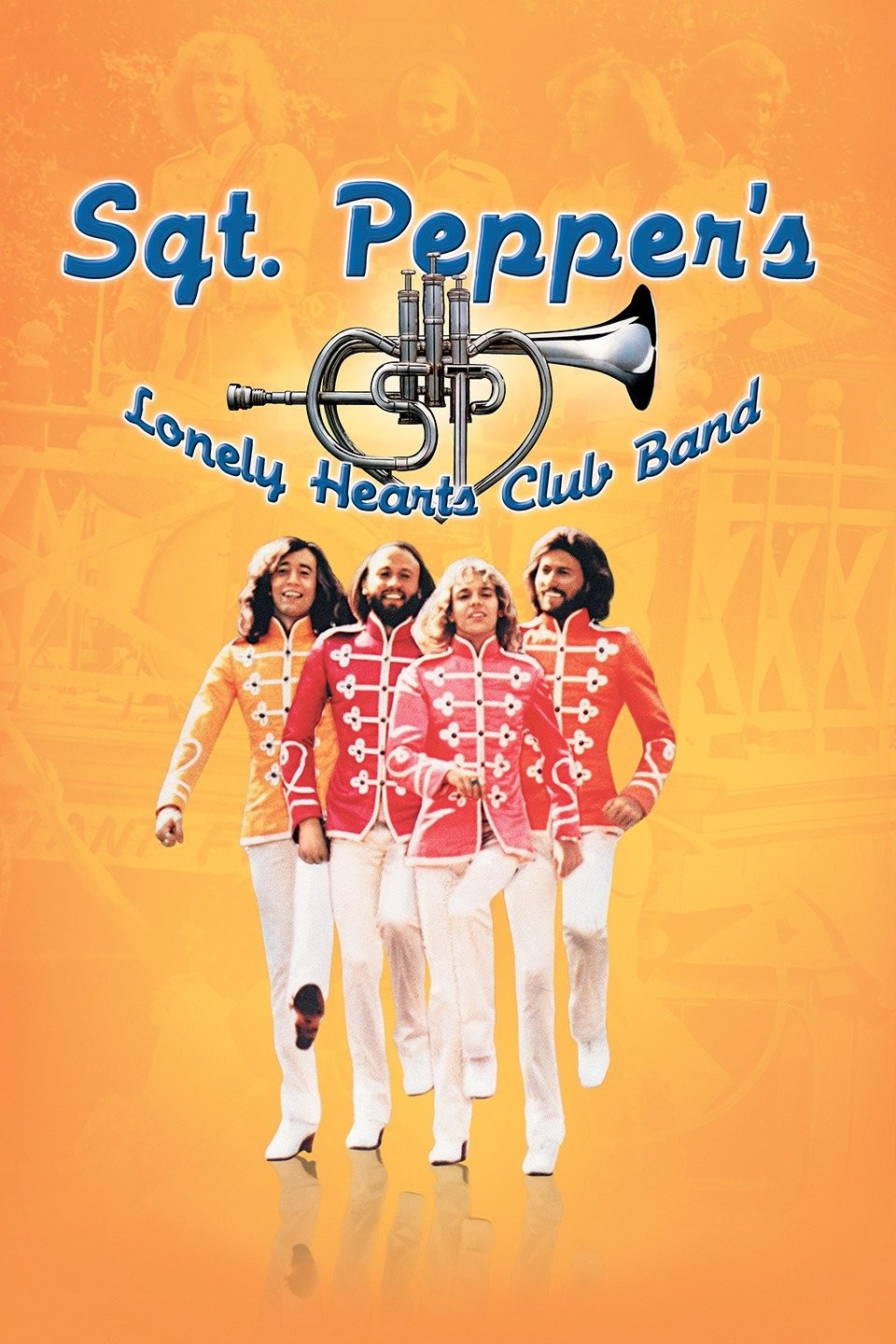 It is no wonder that “Mr. Kite” shows up in most tribute productions about The Beatles, including the 2007 movie musical “Across The Universe,” the Cirque du Soleil’s “Beatles Love” spectacular, and even the infamous 1978 film “Sgt. Pepper’s Lonely Hearts Club Band” (with both Maurice Gibb and George Burns singing lead vocals on this song, nonetheless). The original 1967 recording of "Mr. Kite," being a remarkable piece of fantasy from the band's “Sgt. Pepper” album, is, without question, one of the outstanding highlights in most fan's minds. John may have been quick to dismiss it, but most would beg to differ. In fact, as noted in the introduction to this review, Lennon's own opinion of the song lightened up considerably by 1980 when he did his Playboy Magazine interview. “It is so cosmically beautiful...the song is pure, like a painting, a pure watercolor.” It is no wonder that “Mr. Kite” shows up in most tribute productions about The Beatles, including the 2007 movie musical “Across The Universe,” the Cirque du Soleil’s “Beatles Love” spectacular, and even the infamous 1978 film “Sgt. Pepper’s Lonely Hearts Club Band” (with both Maurice Gibb and George Burns singing lead vocals on this song, nonetheless). The original 1967 recording of "Mr. Kite," being a remarkable piece of fantasy from the band's “Sgt. Pepper” album, is, without question, one of the outstanding highlights in most fan's minds. John may have been quick to dismiss it, but most would beg to differ. In fact, as noted in the introduction to this review, Lennon's own opinion of the song lightened up considerably by 1980 when he did his Playboy Magazine interview. “It is so cosmically beautiful...the song is pure, like a painting, a pure watercolor.”
Song Summary
“Being For The Benefit Of Mr. Kite”
Written by: John Lennon / Paul McCartney
-
Song Written: February, 1967
-
Song Recorded: February 17 and 20, March 28, 29 & 31, 1967
-
First US Release Date: June 2, 1967
-
-
US Single Release: n/a
-
Highest Chart Position: n/a
-
-
Length: 2:36
-
Key: D minor
-
Producer: George Martin
-
Engineers: Geoff Emerick, Richard Lush
Instrumentation (most likely):
-
John Lennon - Lead Vocals, Organ (Hammond L-100), Harmonica (Hohner)
-
Paul McCartney - Bass Guitar (1964 Rickenbacker 4001 S), Lead Guitar (1964 Fender Esquire), Backing Vocals
-
George Harrison - Maracas, Bass Harmonica (Hohner), Backing Vocals
-
Ringo Starr - Drums (1964 Ludwig Super Classic Black Oyster Pearl), Harmonica (Hohner)
-
George Martin - Harmonium (Mannborg), Organ (Wurlitzer), Piano (Hamburg Steinway Baby Grand), Glockenspiel
-
Mal Evans - Harmonica (Hohner)
-
Neil Aspinall - Harmonica (Hohner)
Written and compiled by Dave Rybaczewski
|
IF YOU WOULD LIKE TO MAKE A DONATION TO KEEP THIS WEBSITE UP AND RUNNING, PLEASE CLICK BELOW!
|